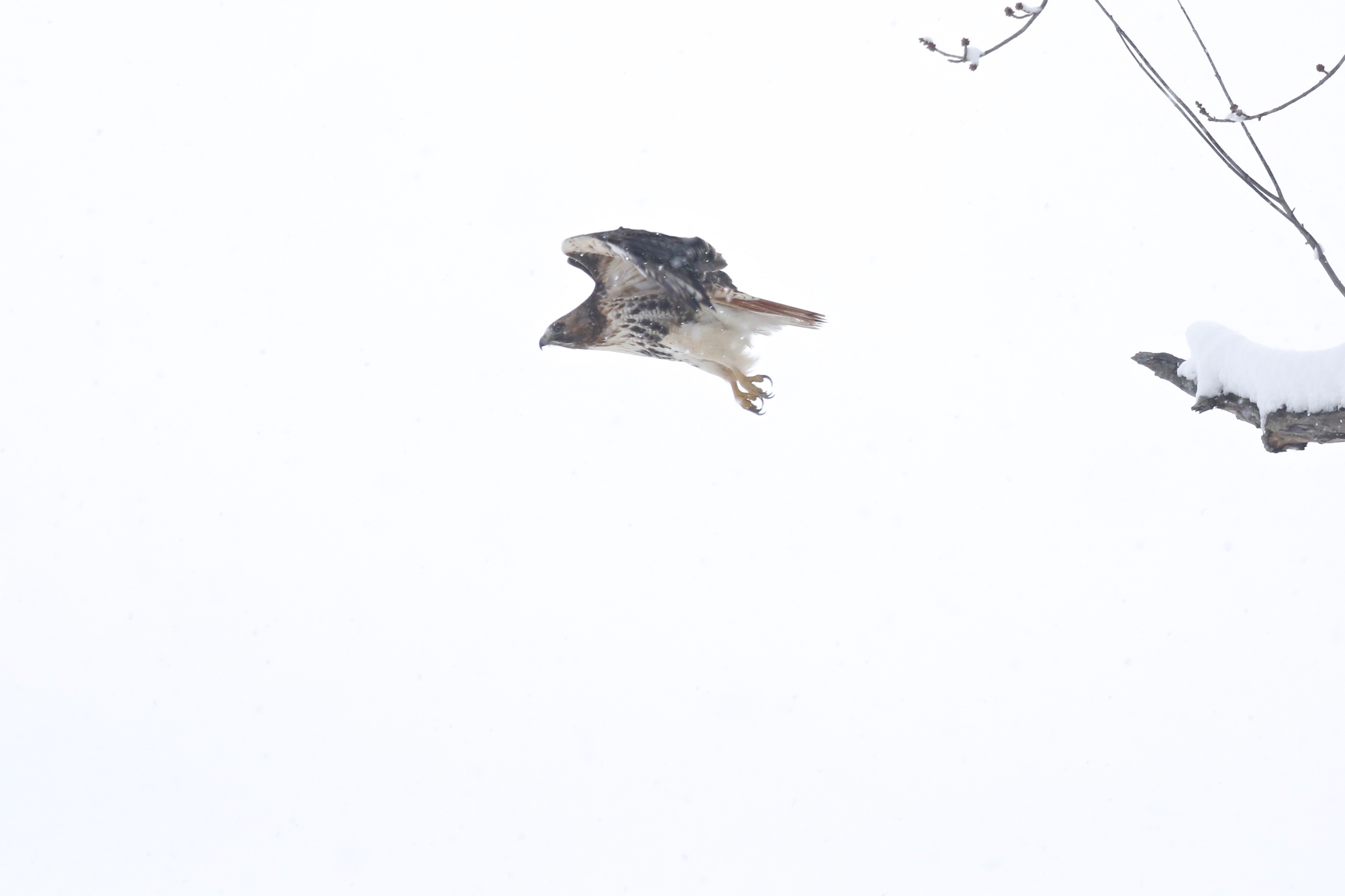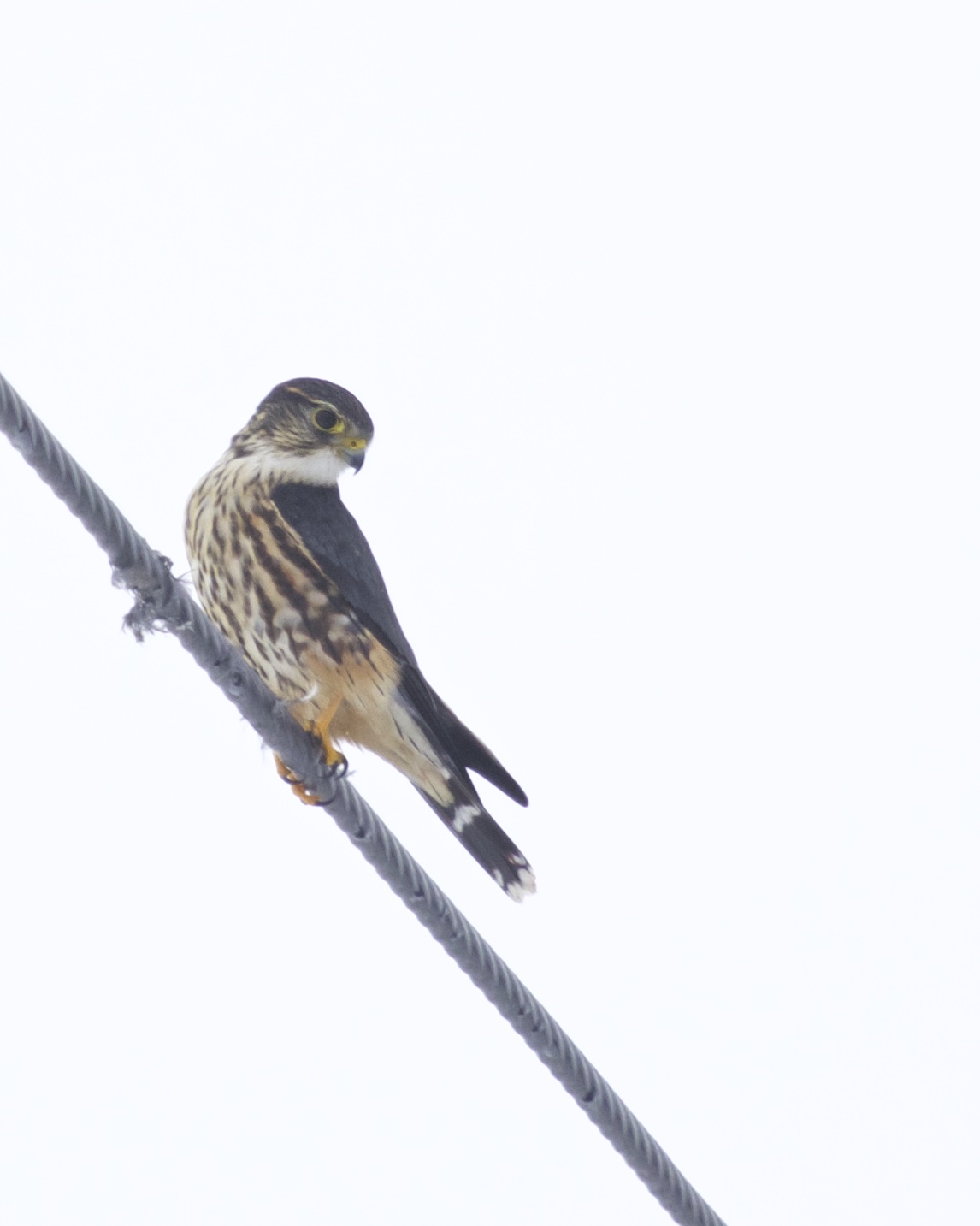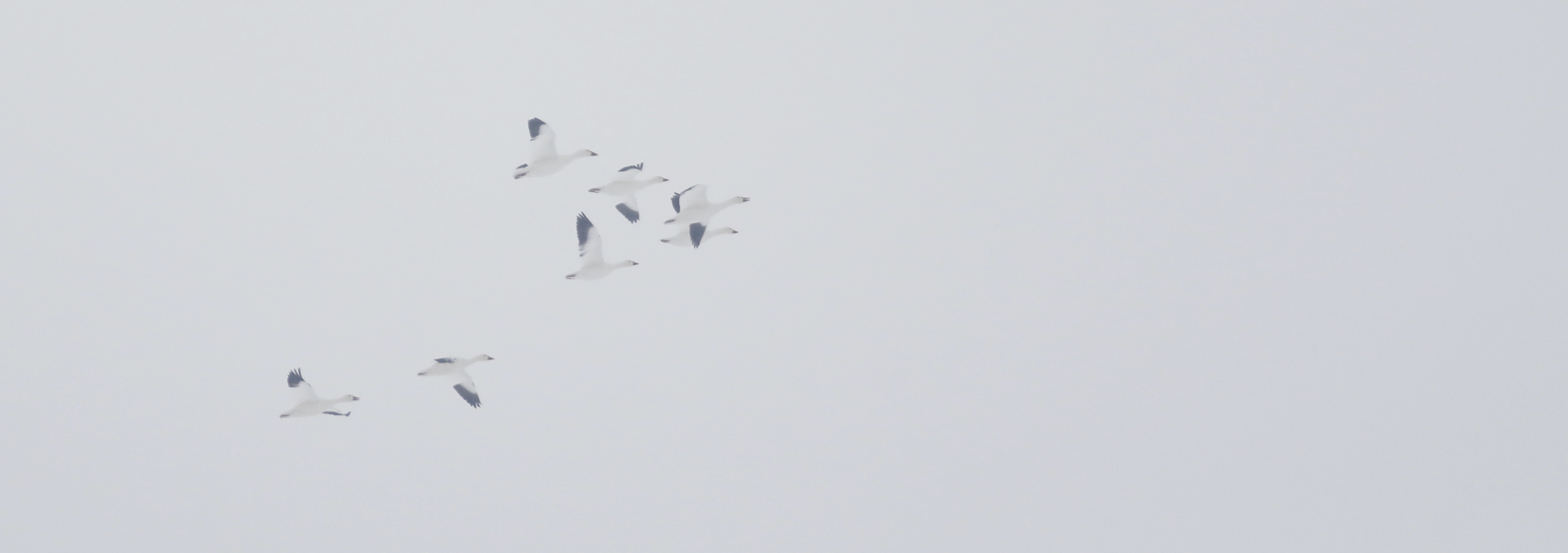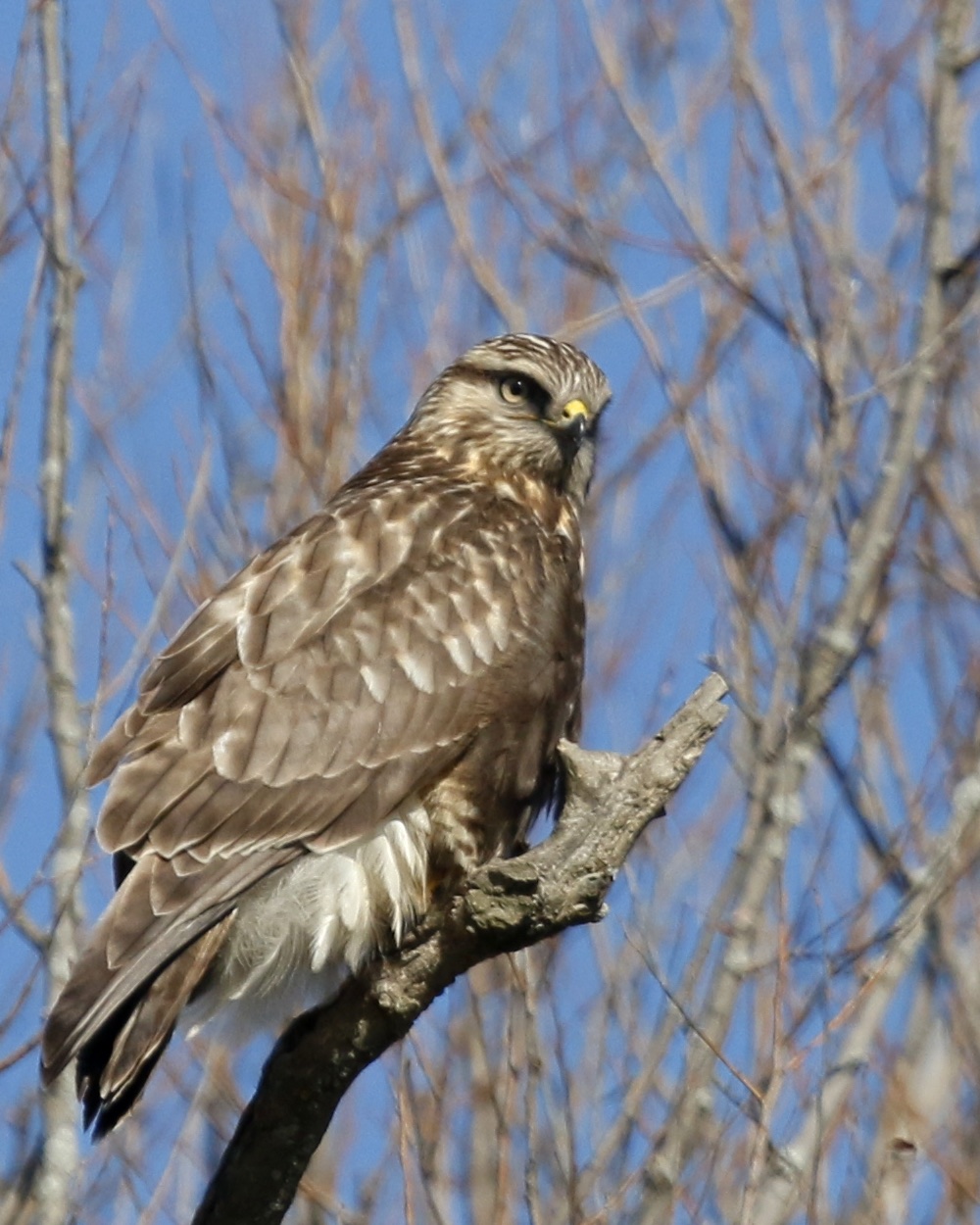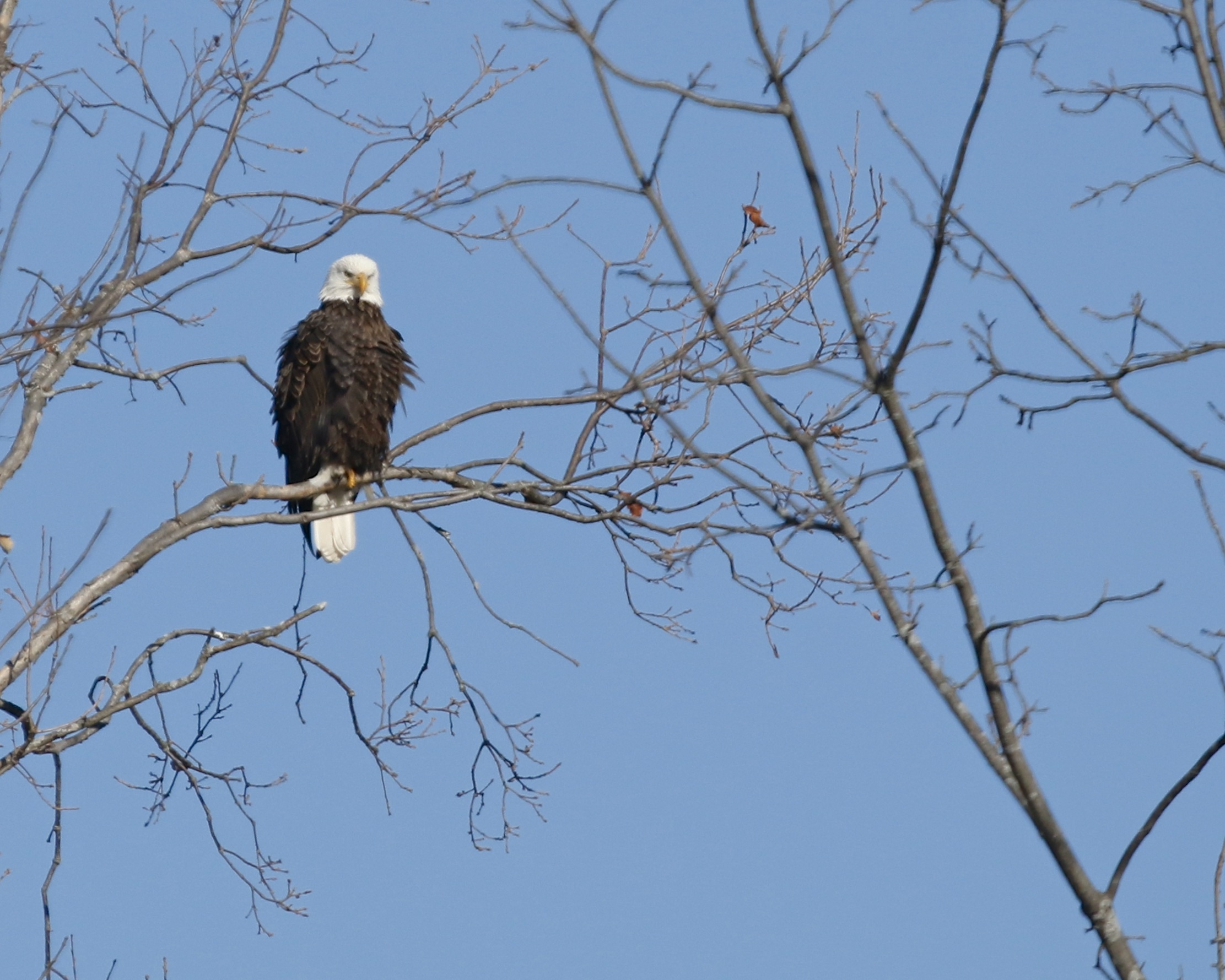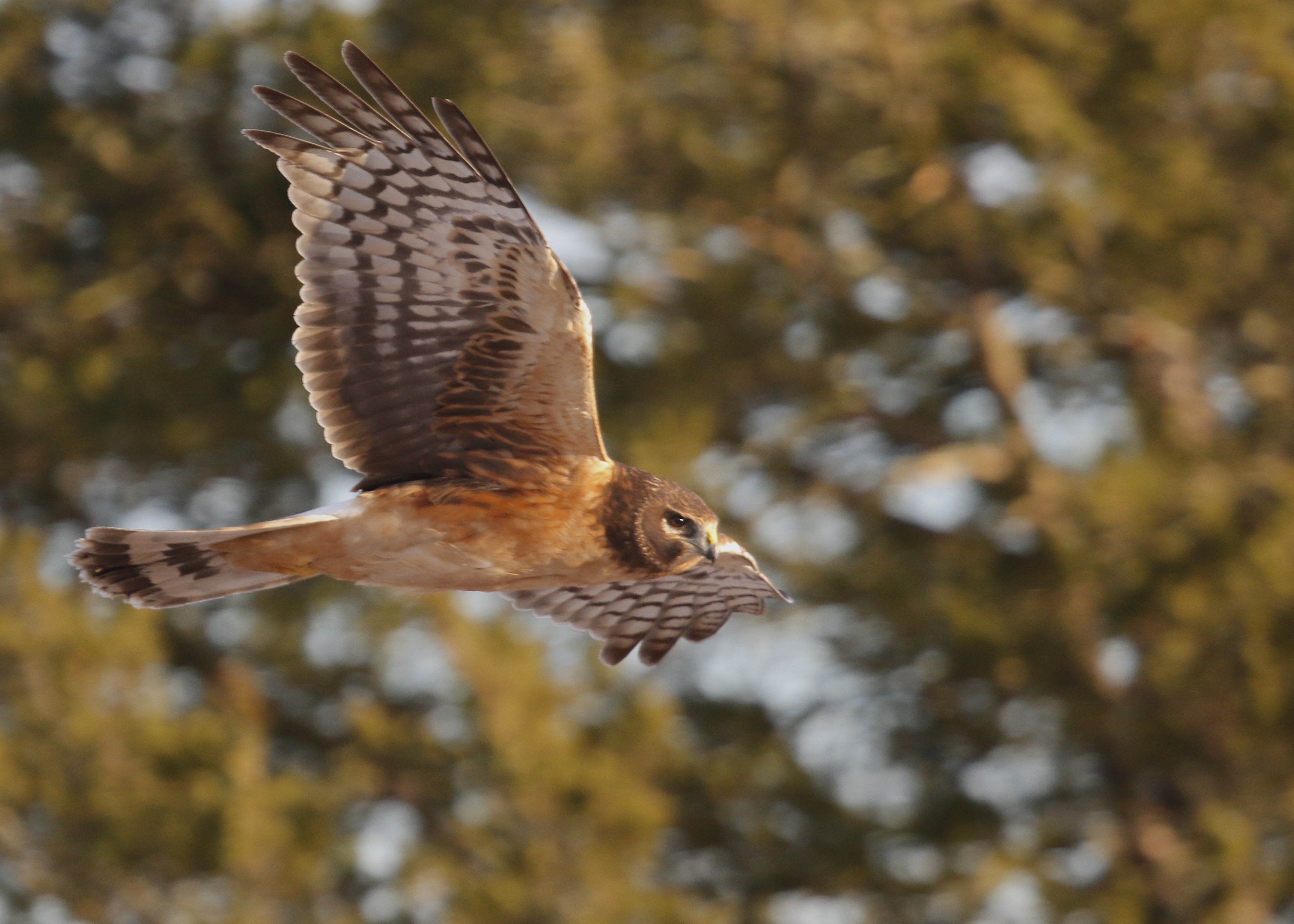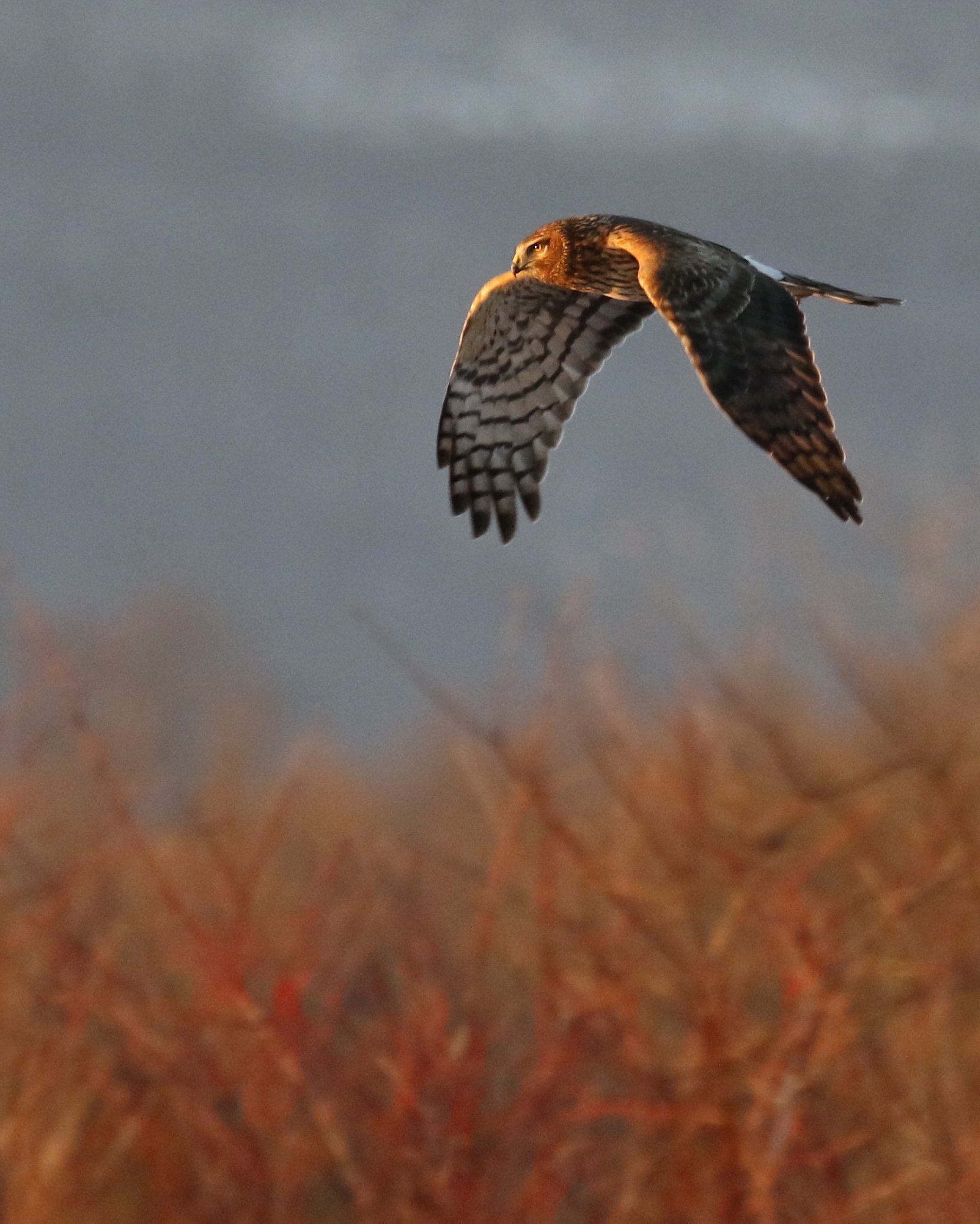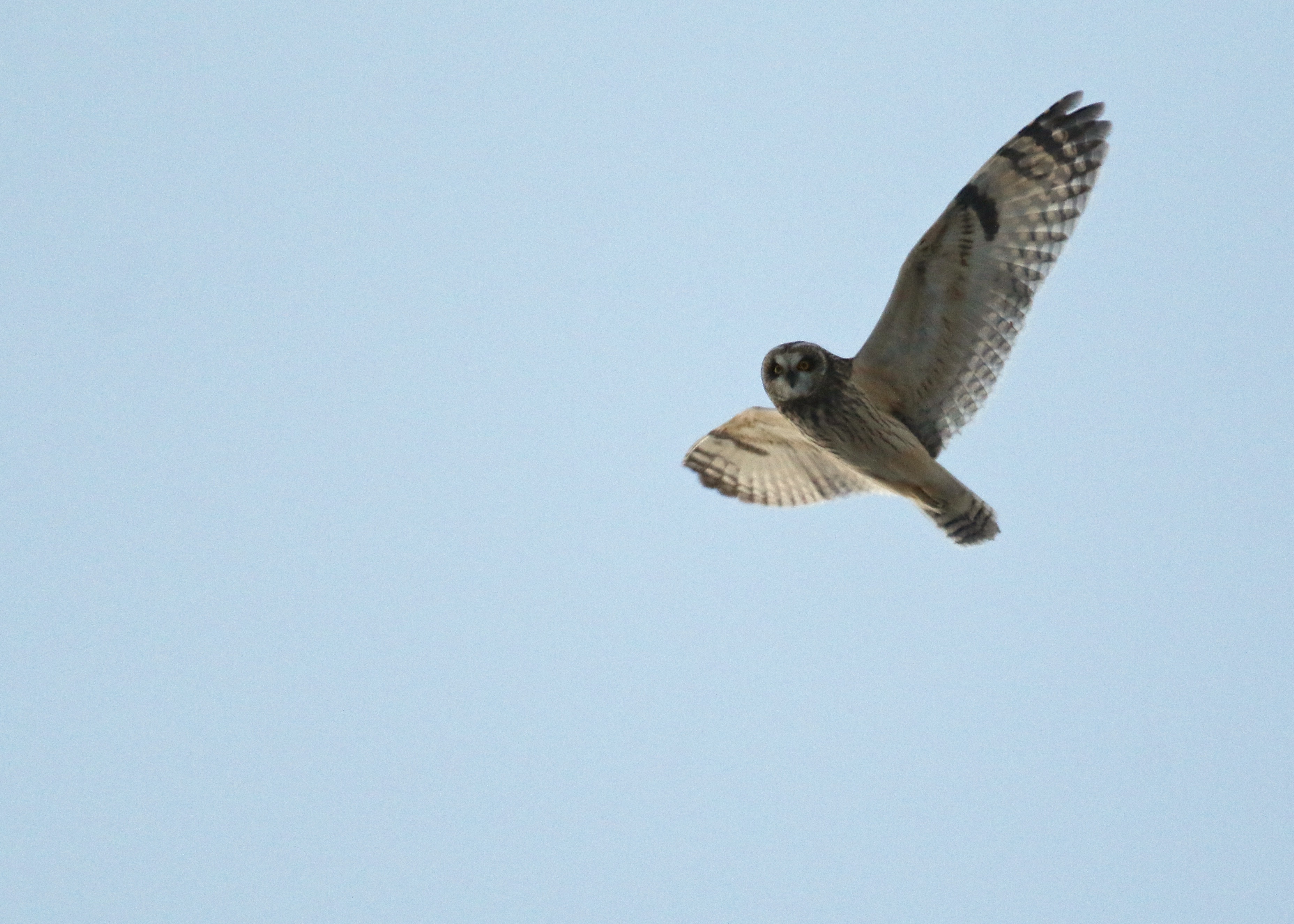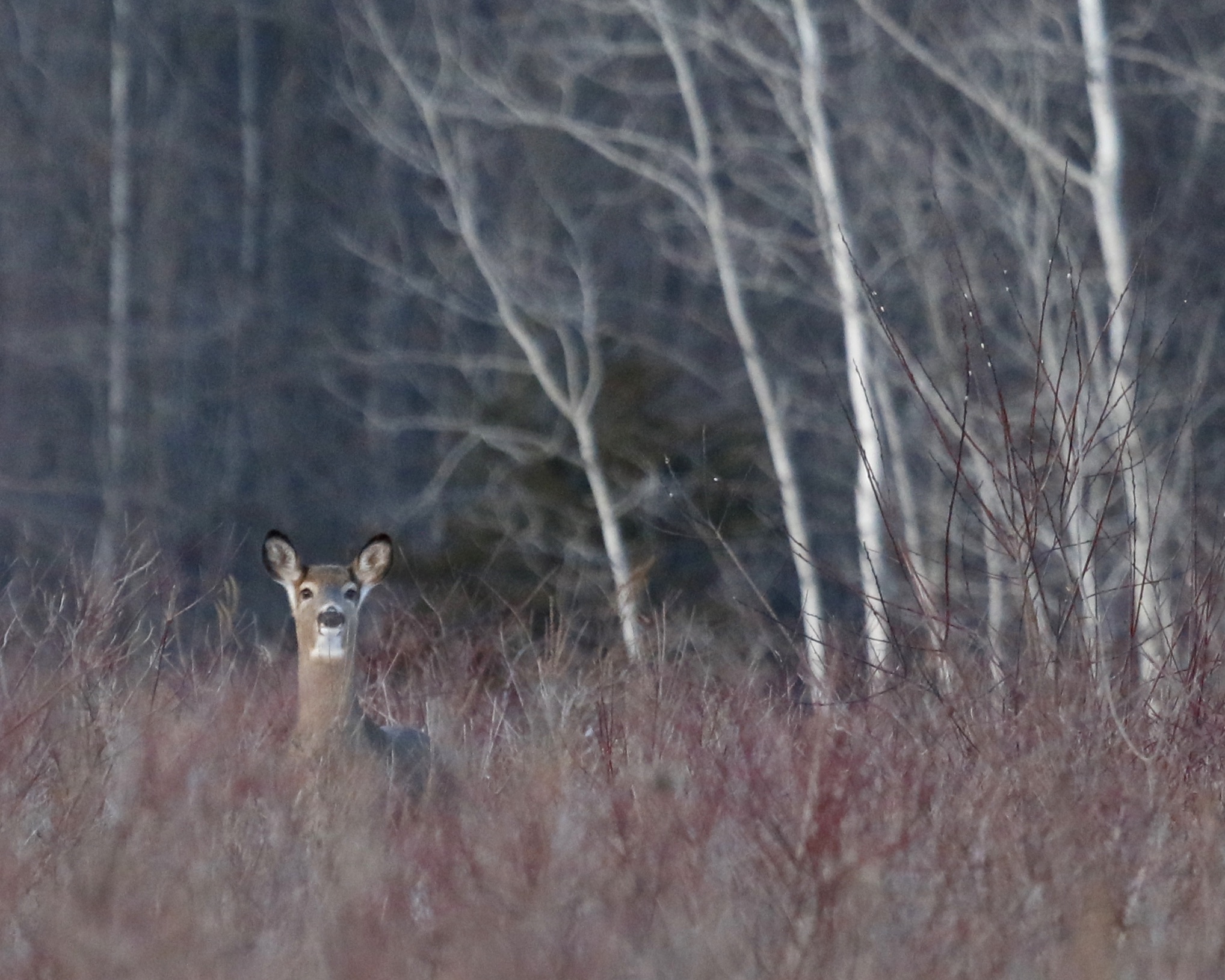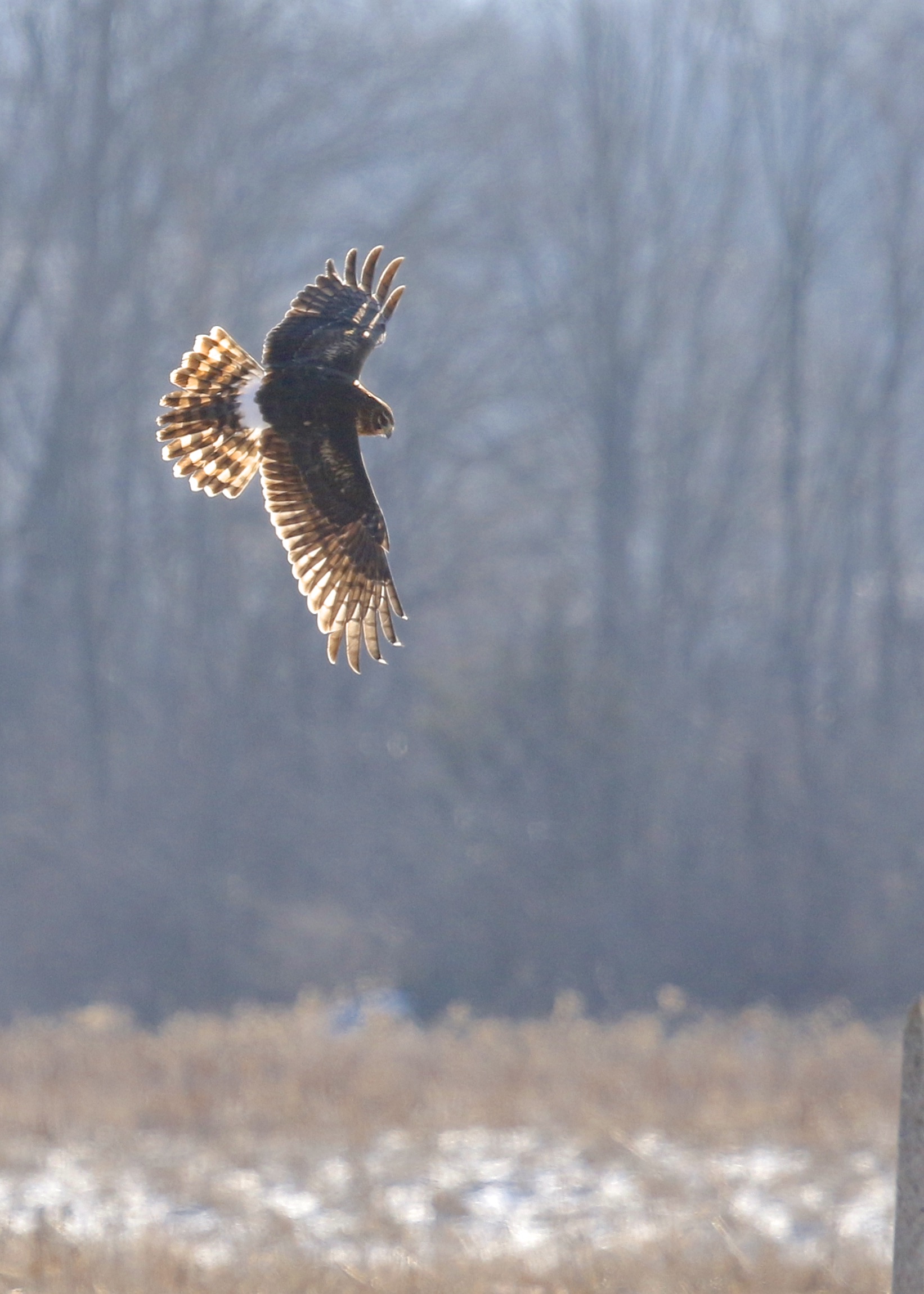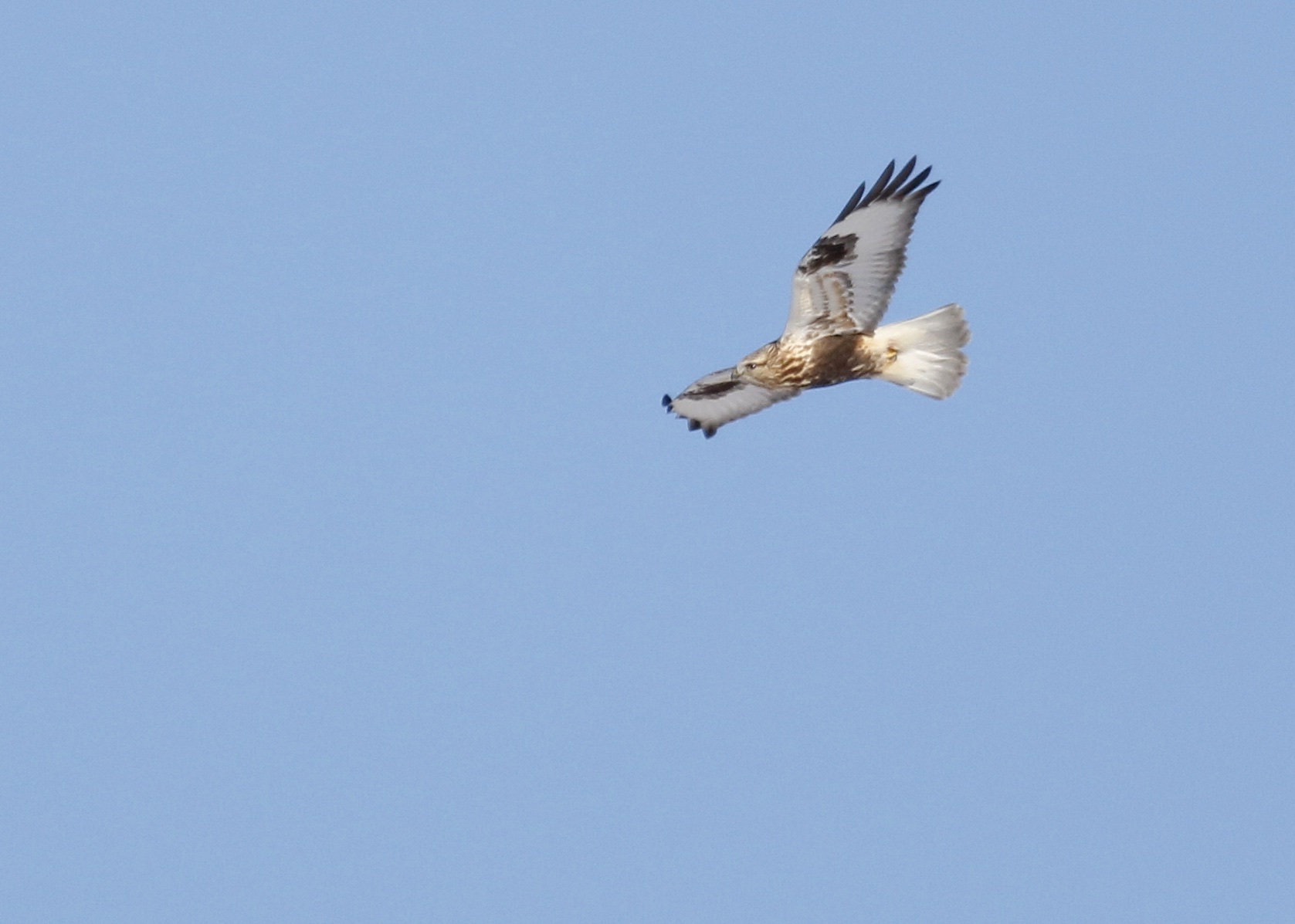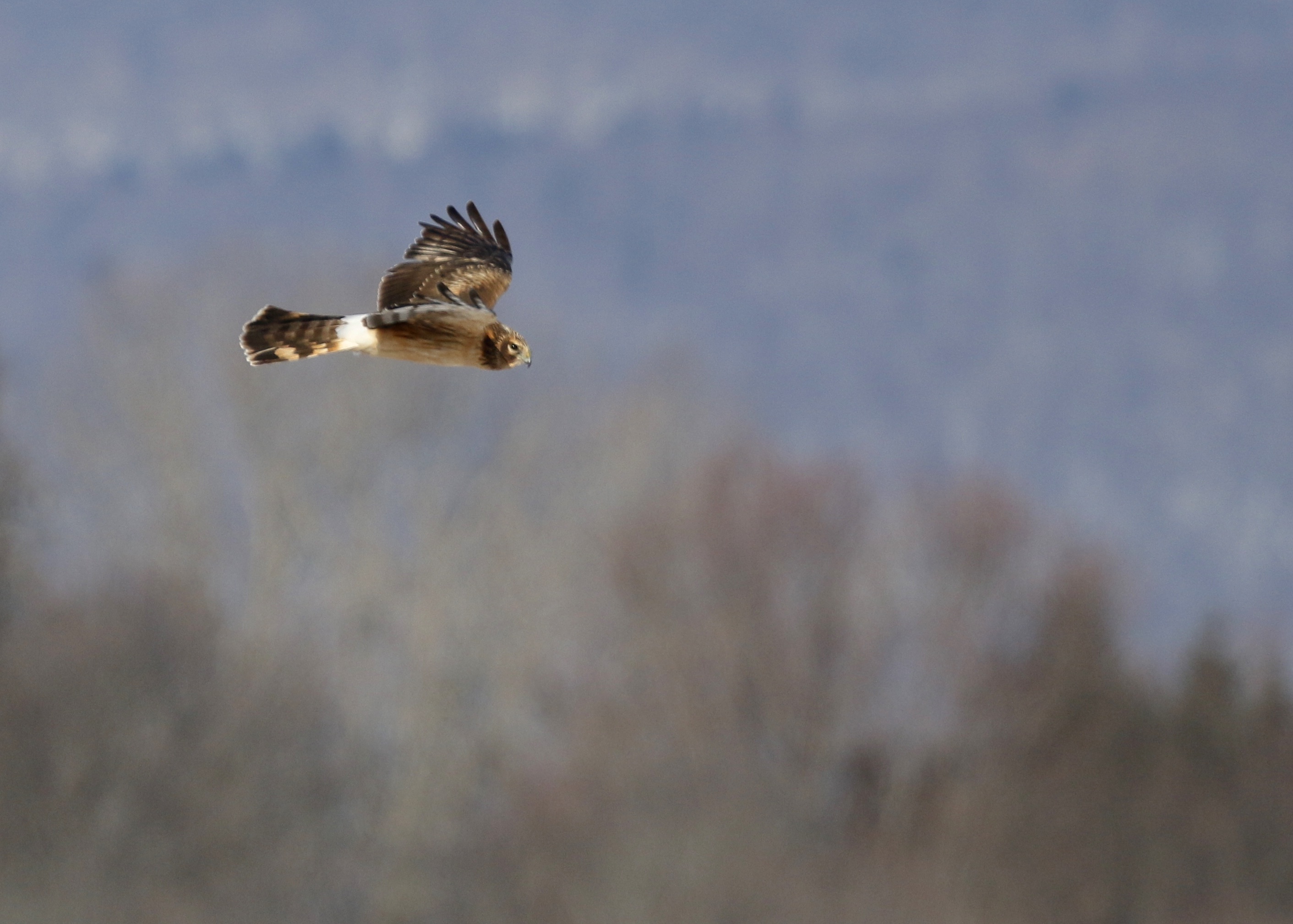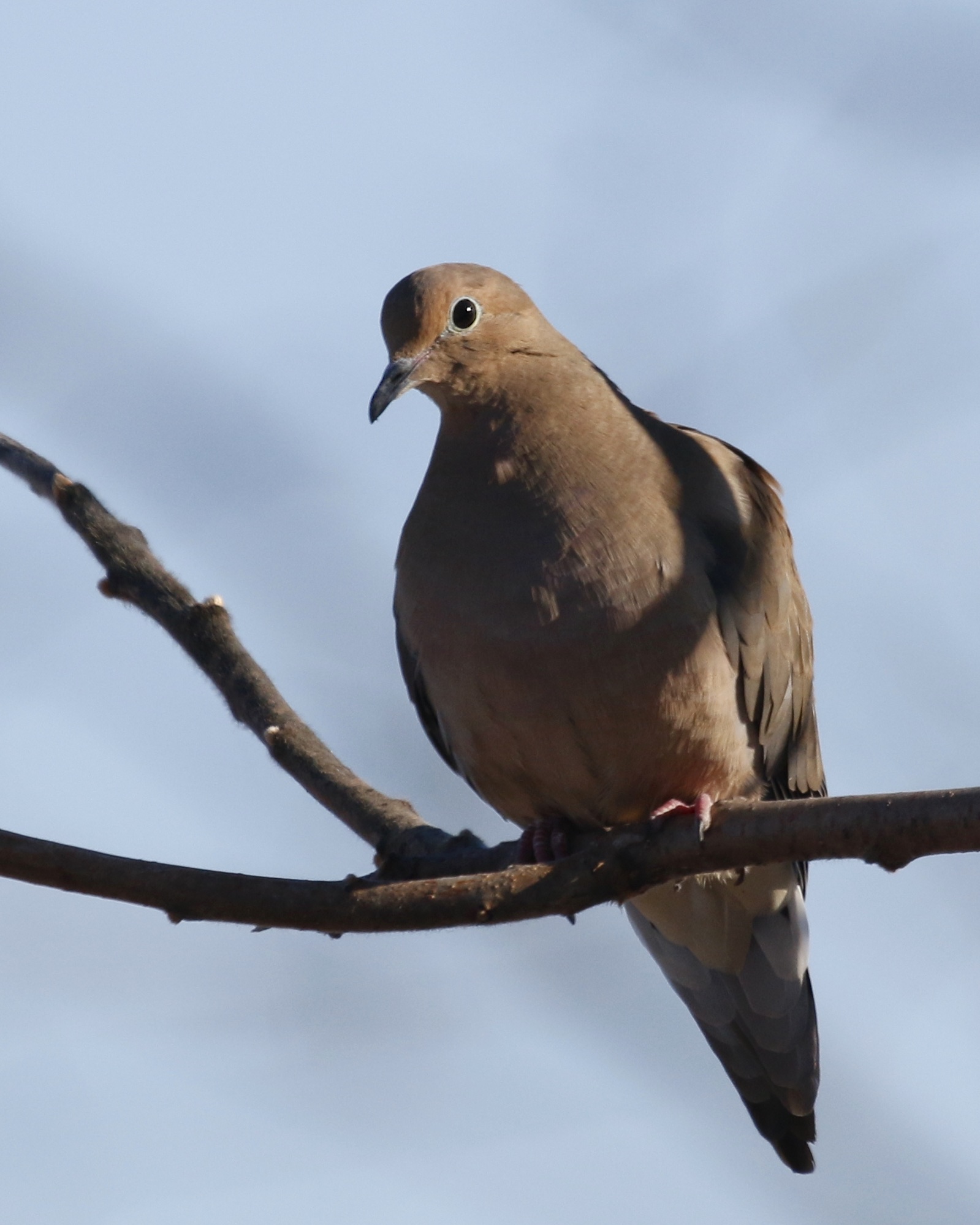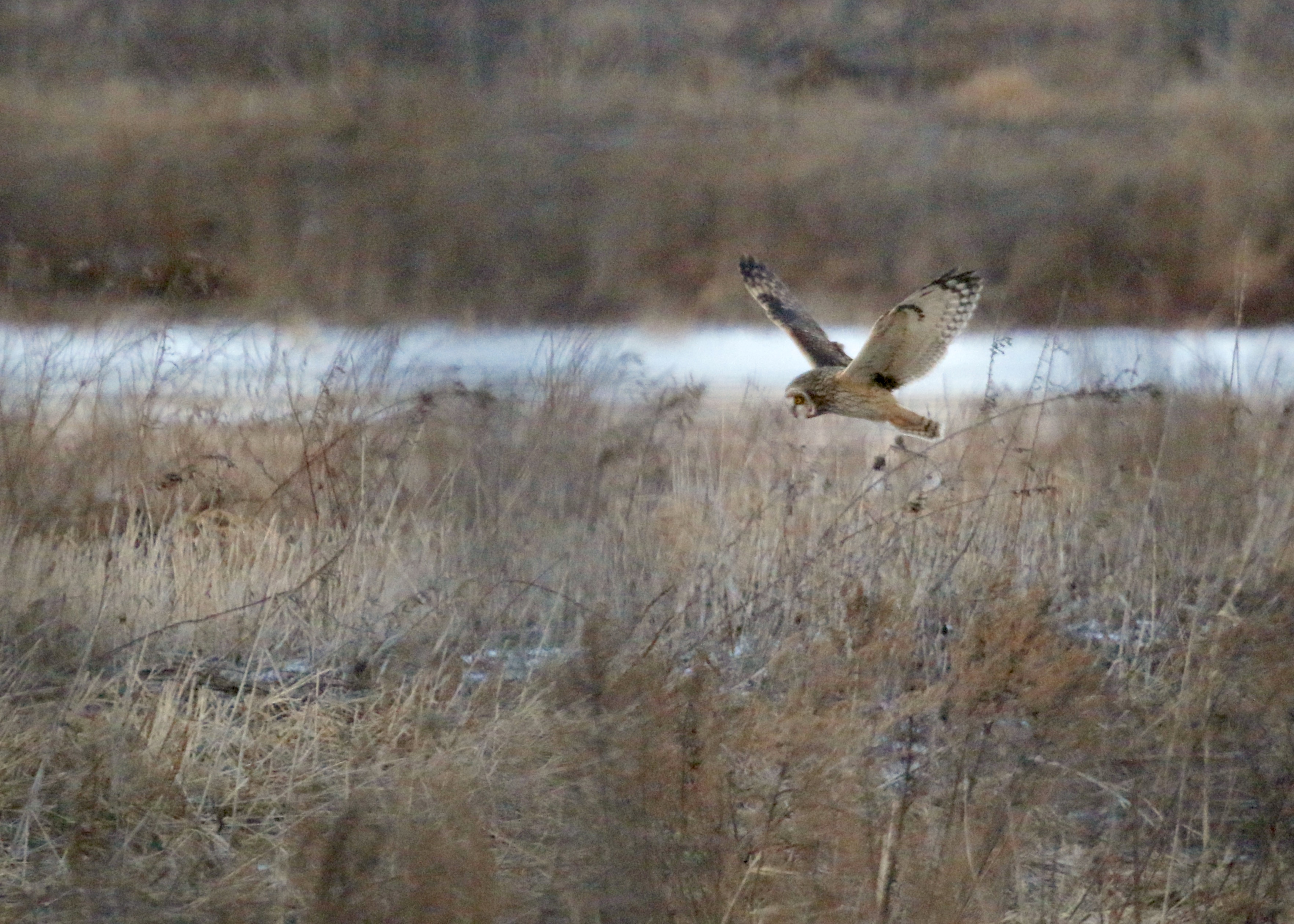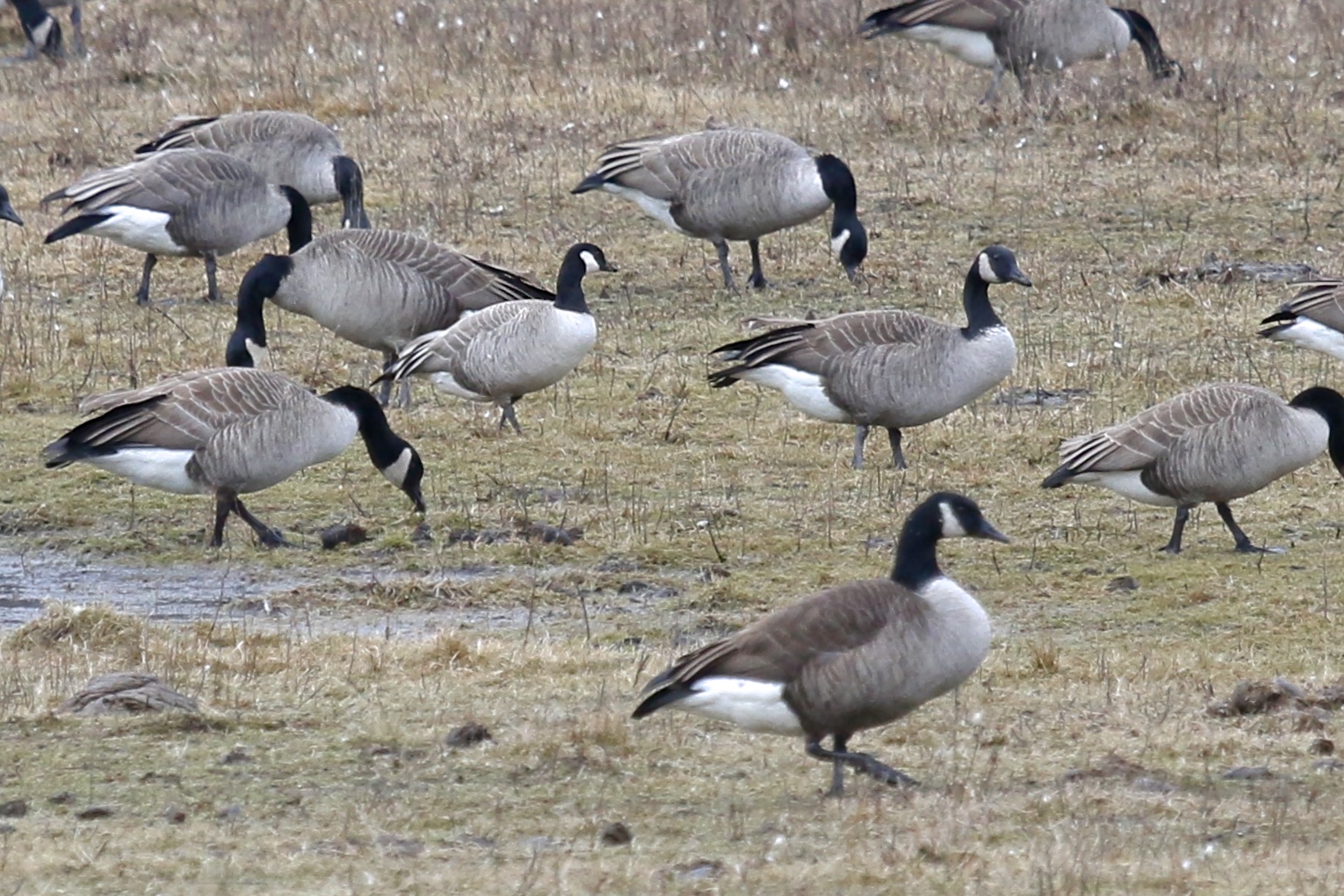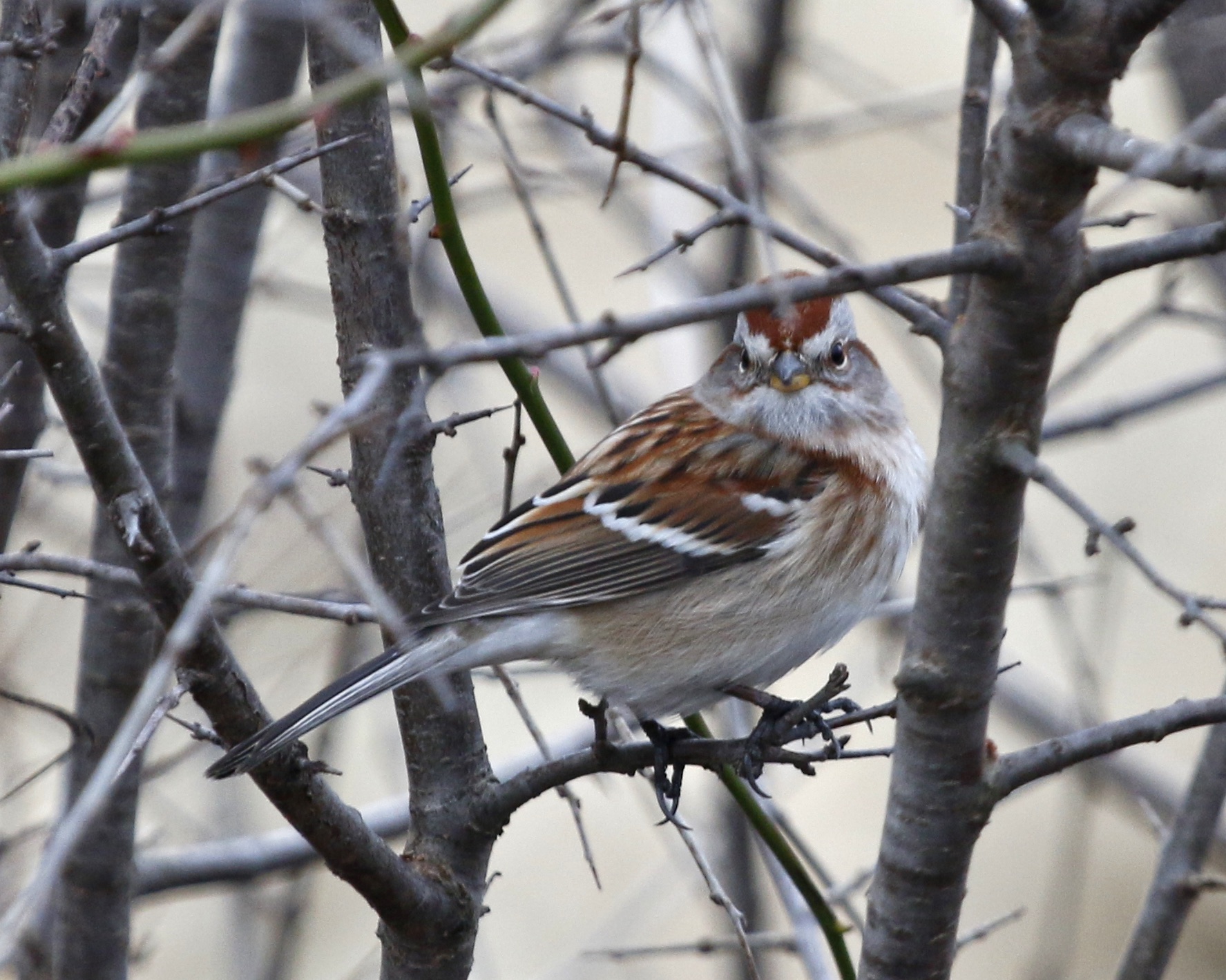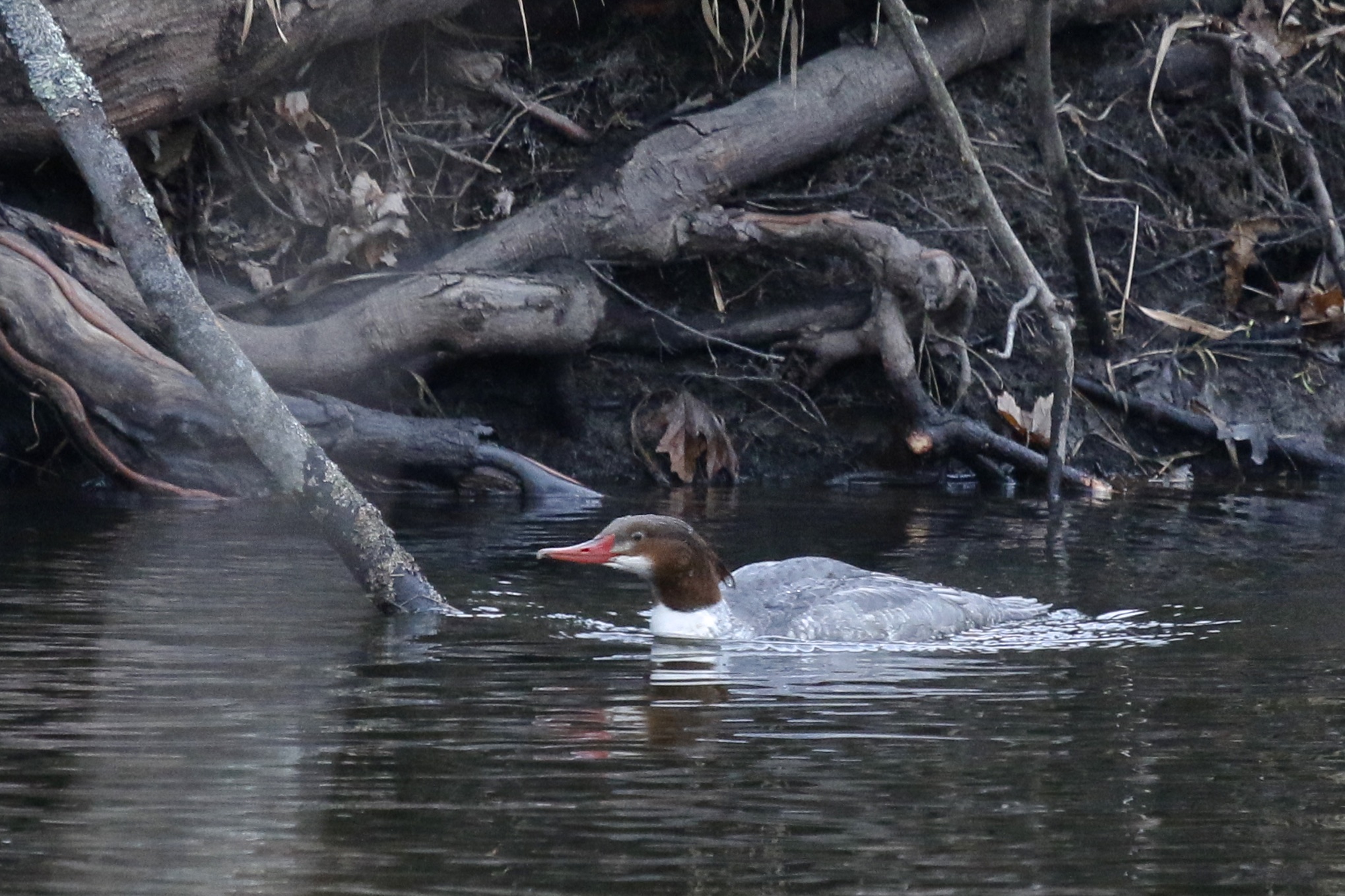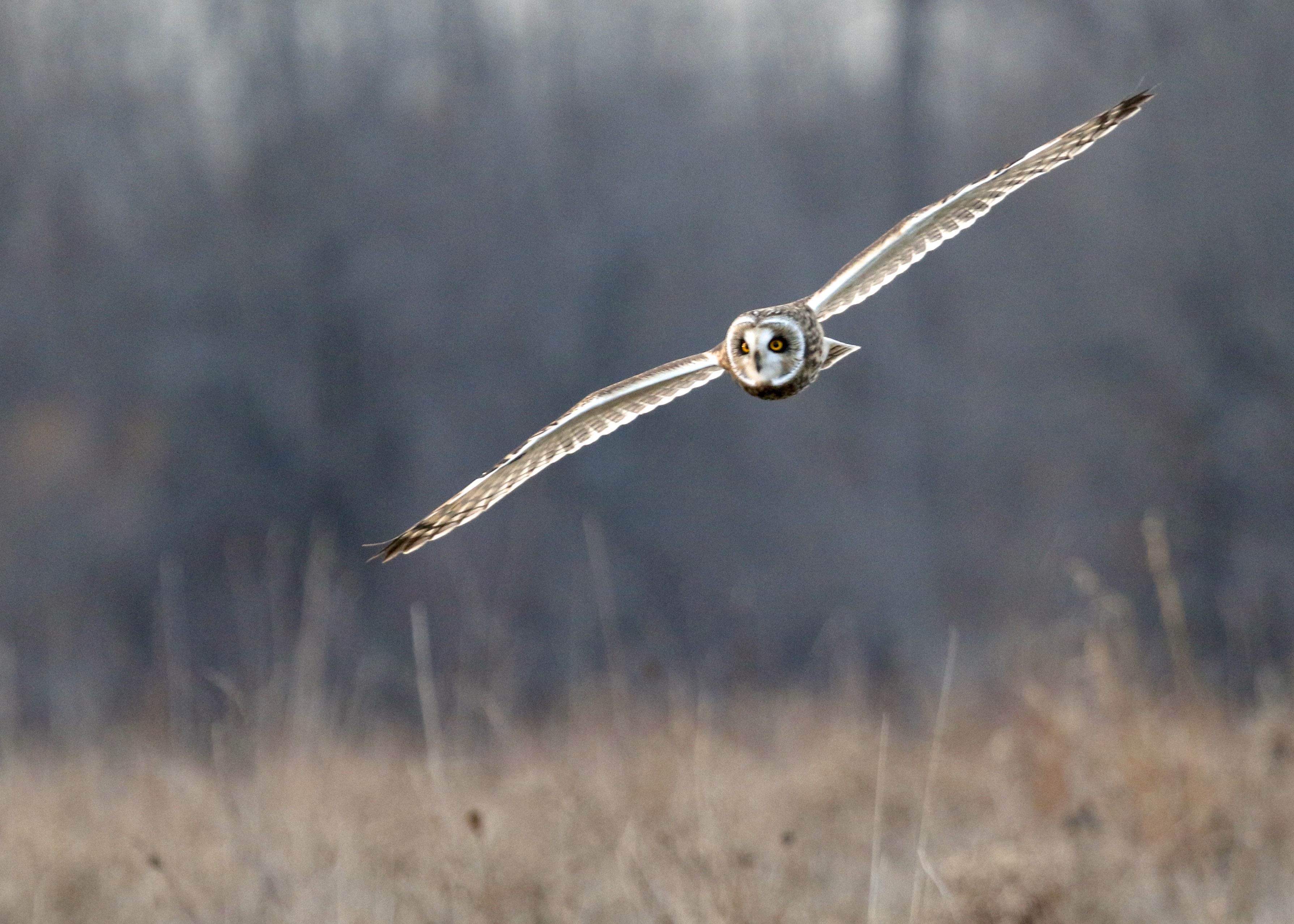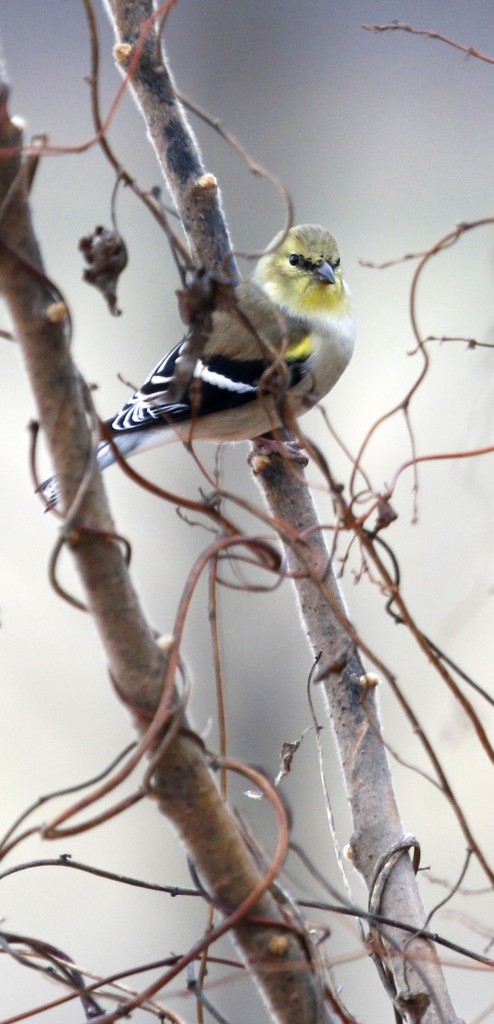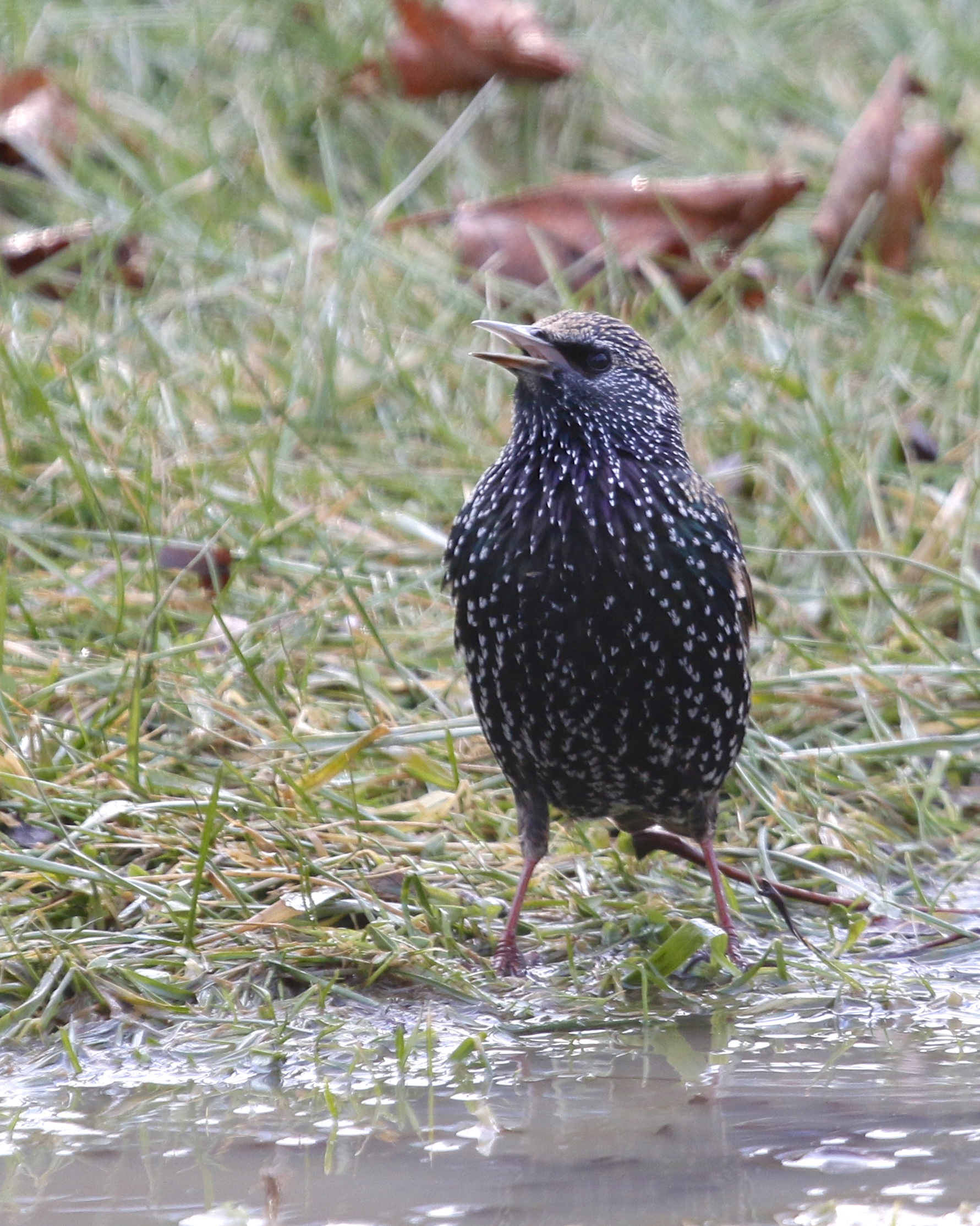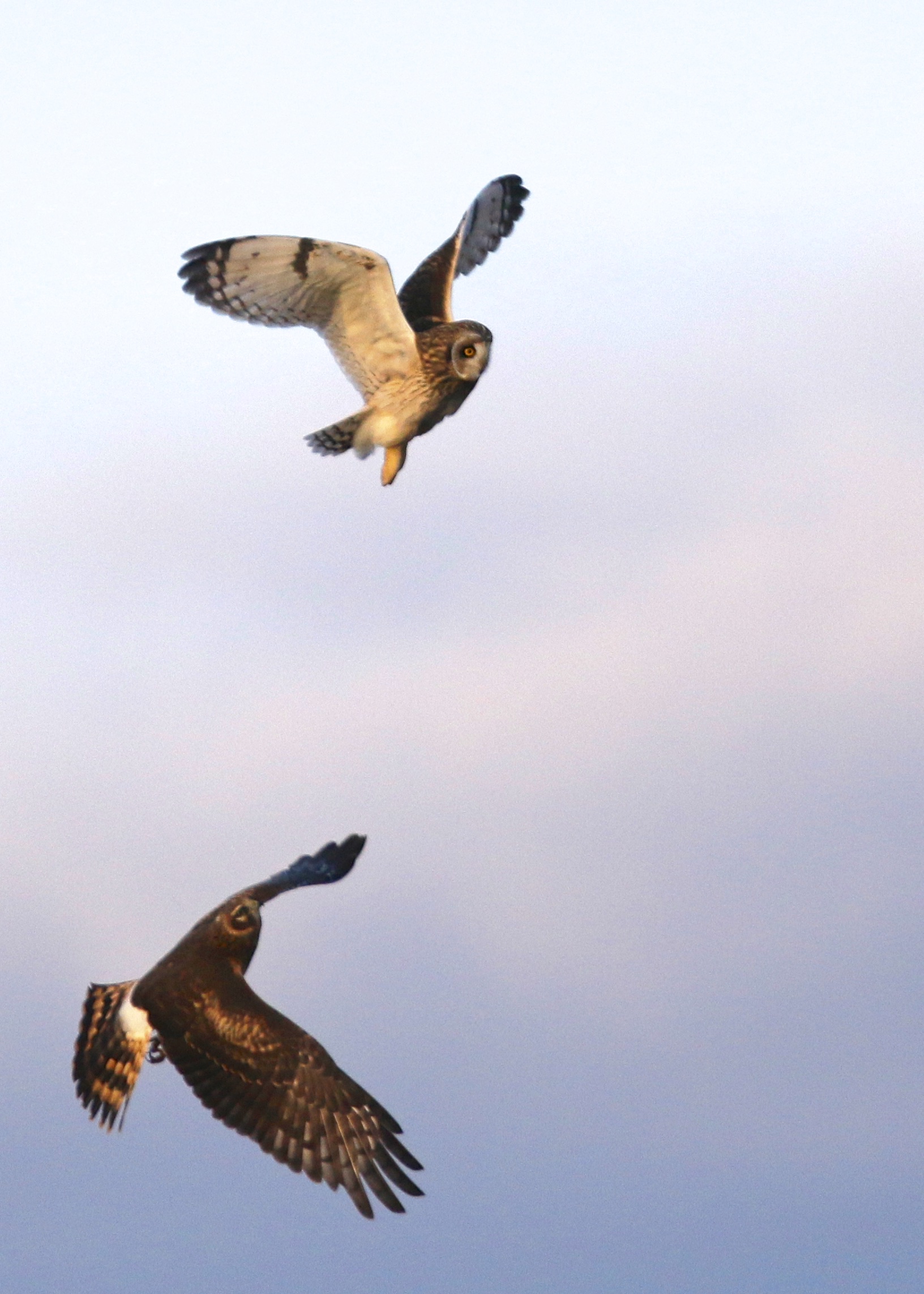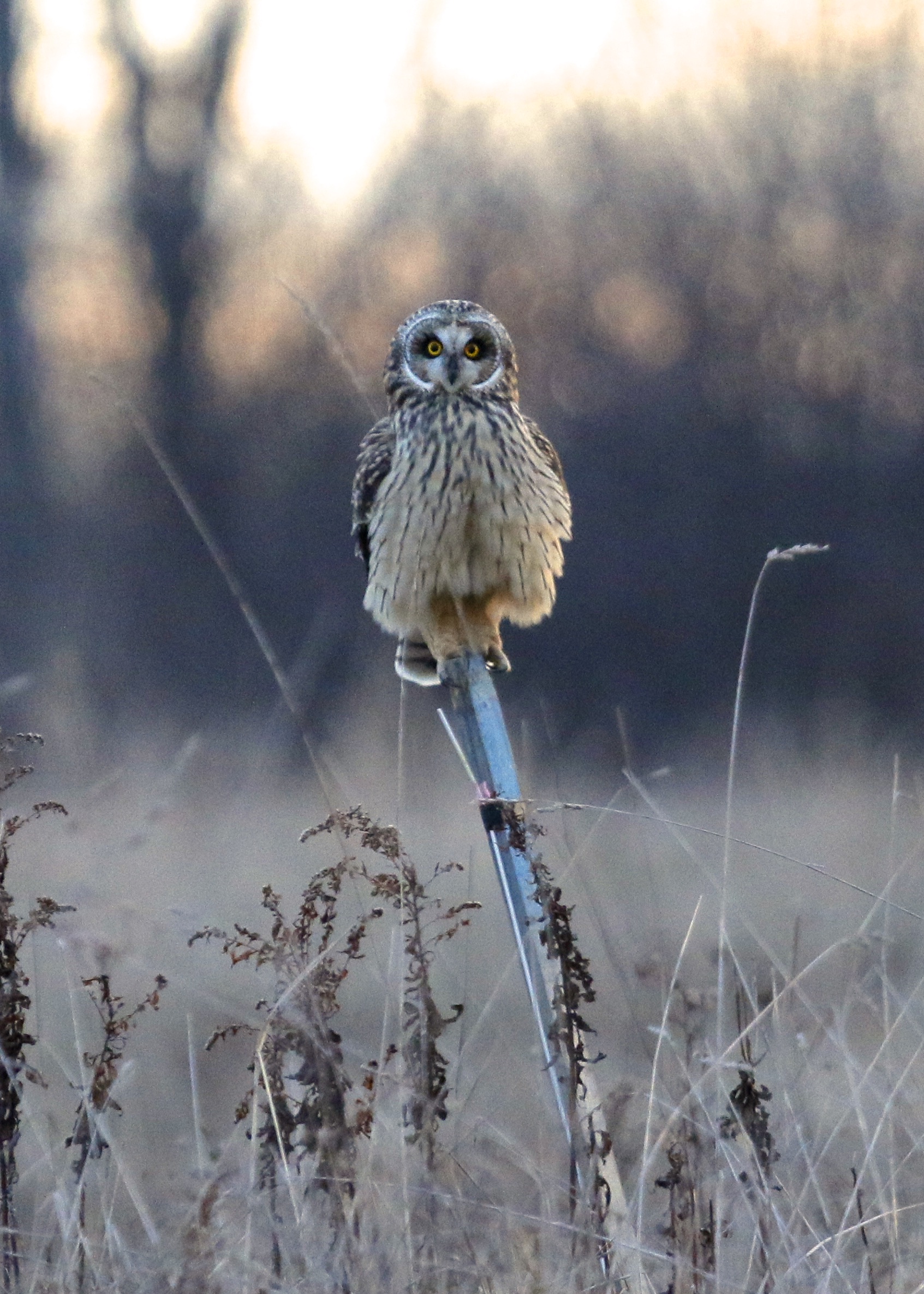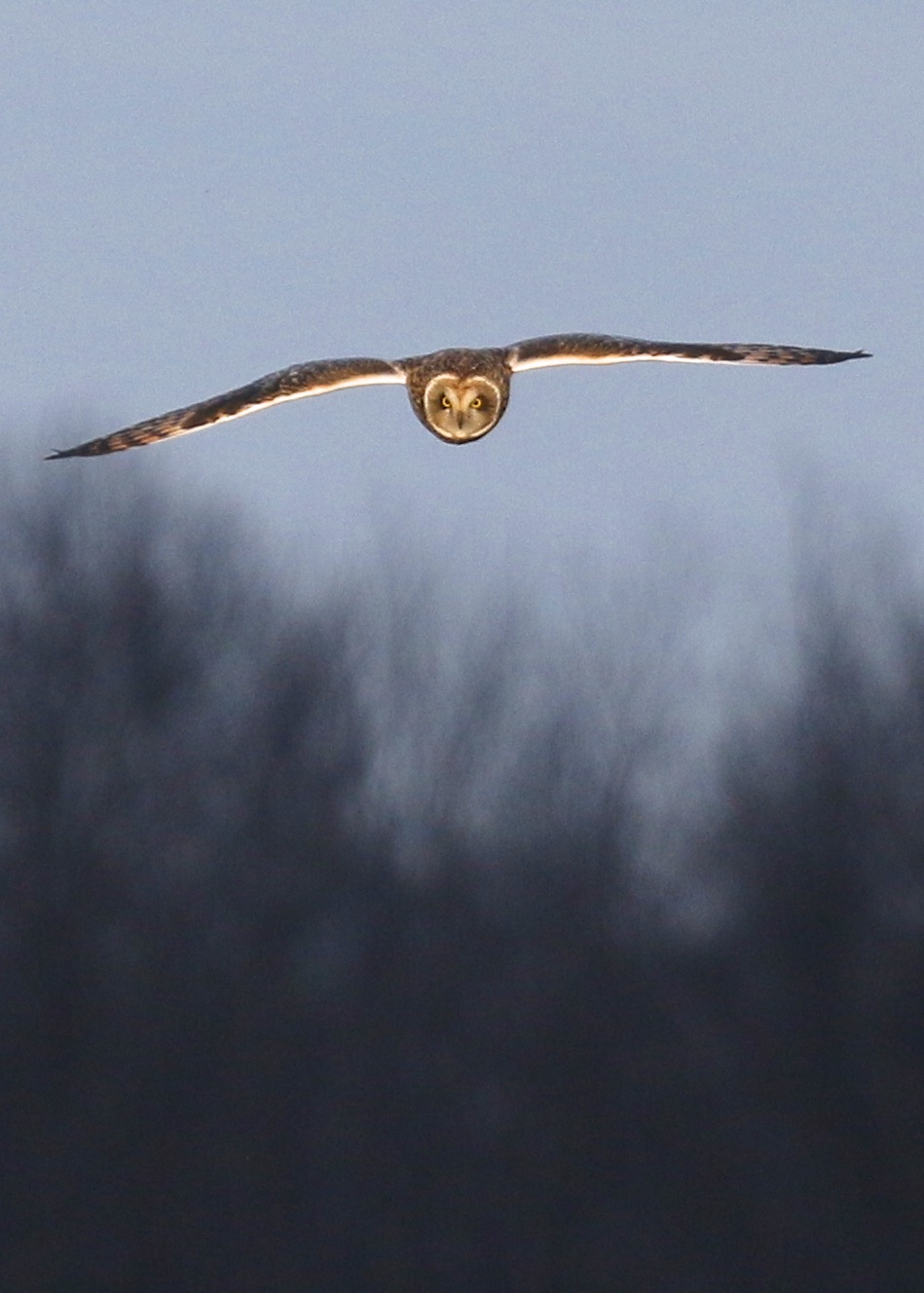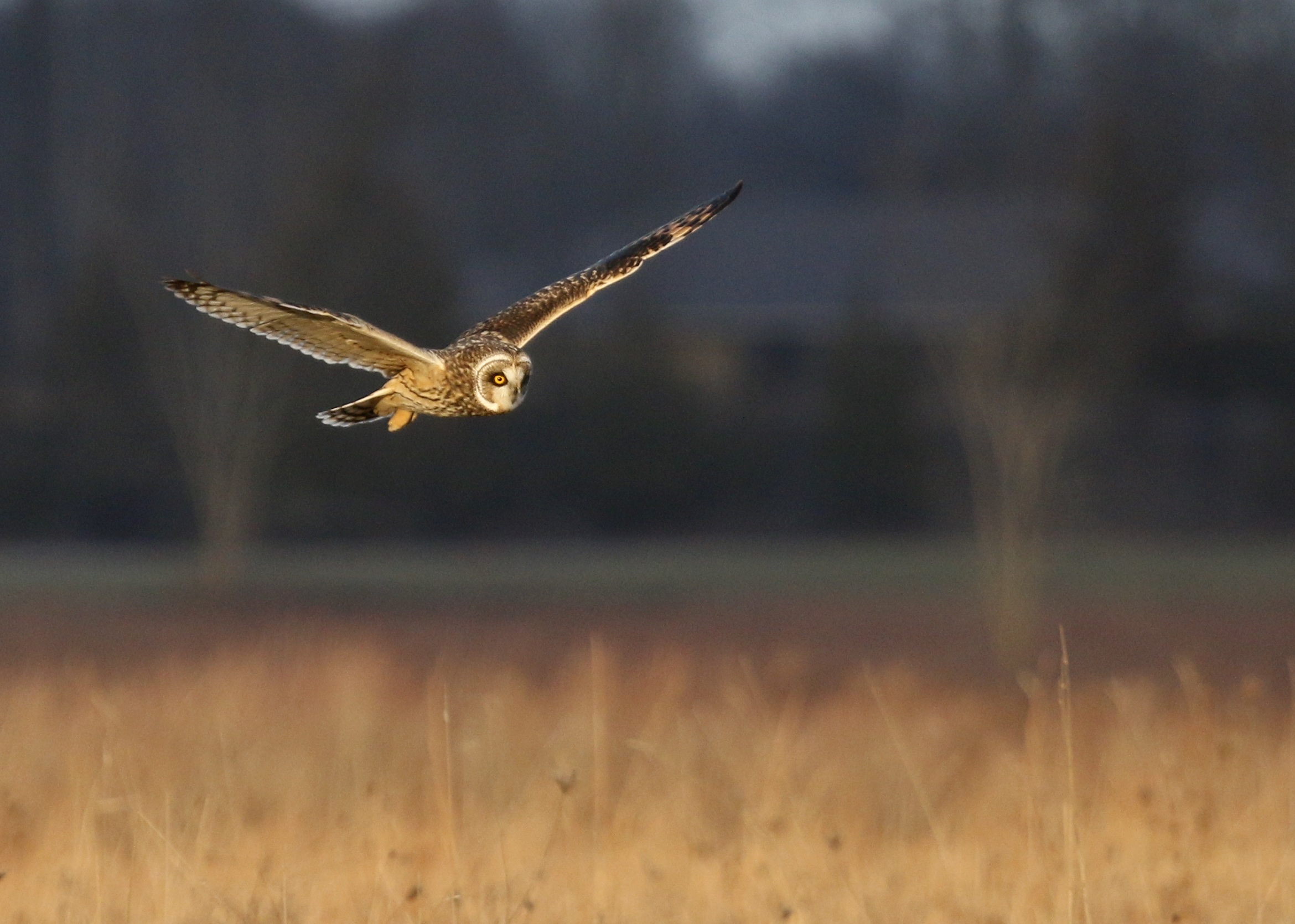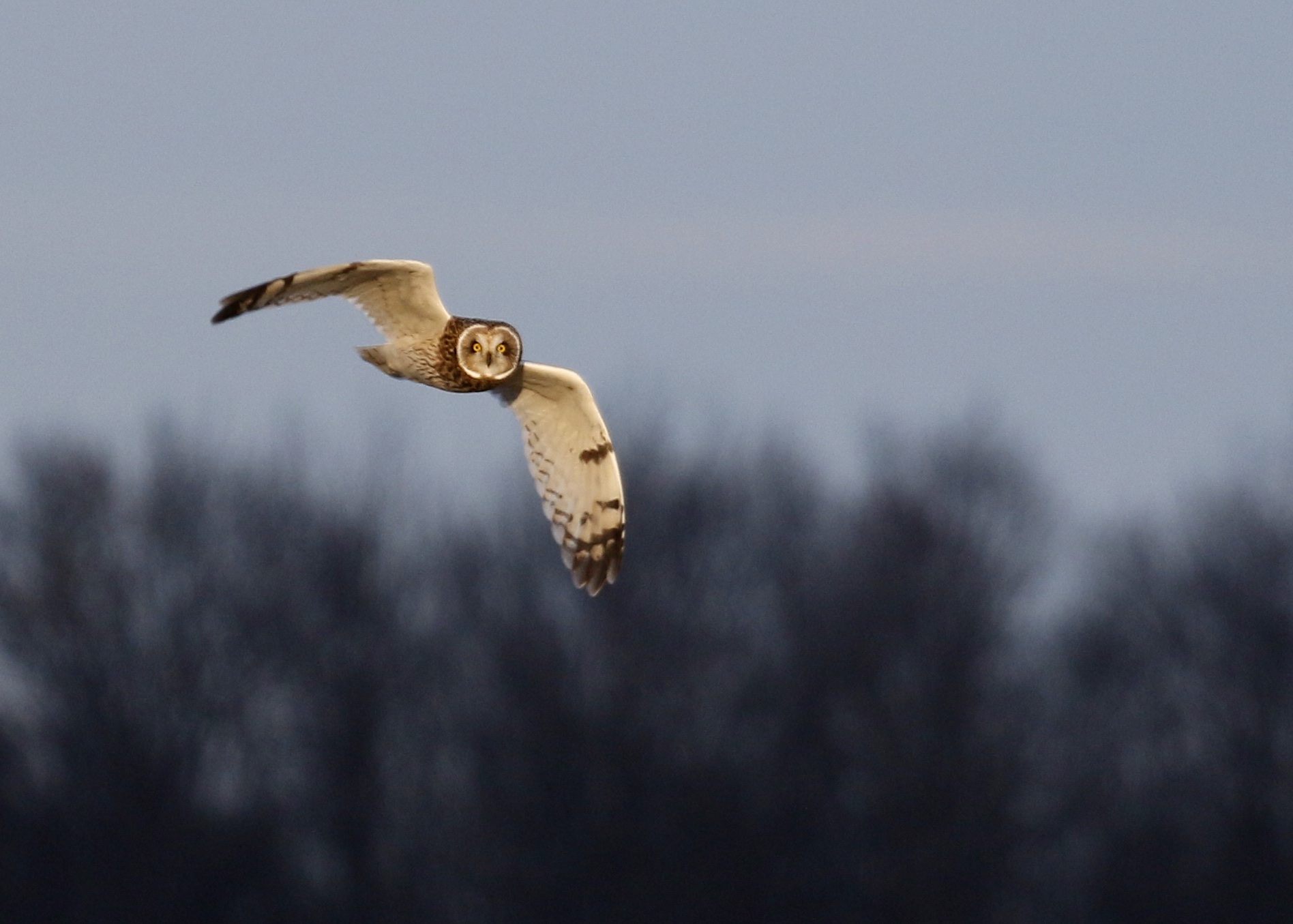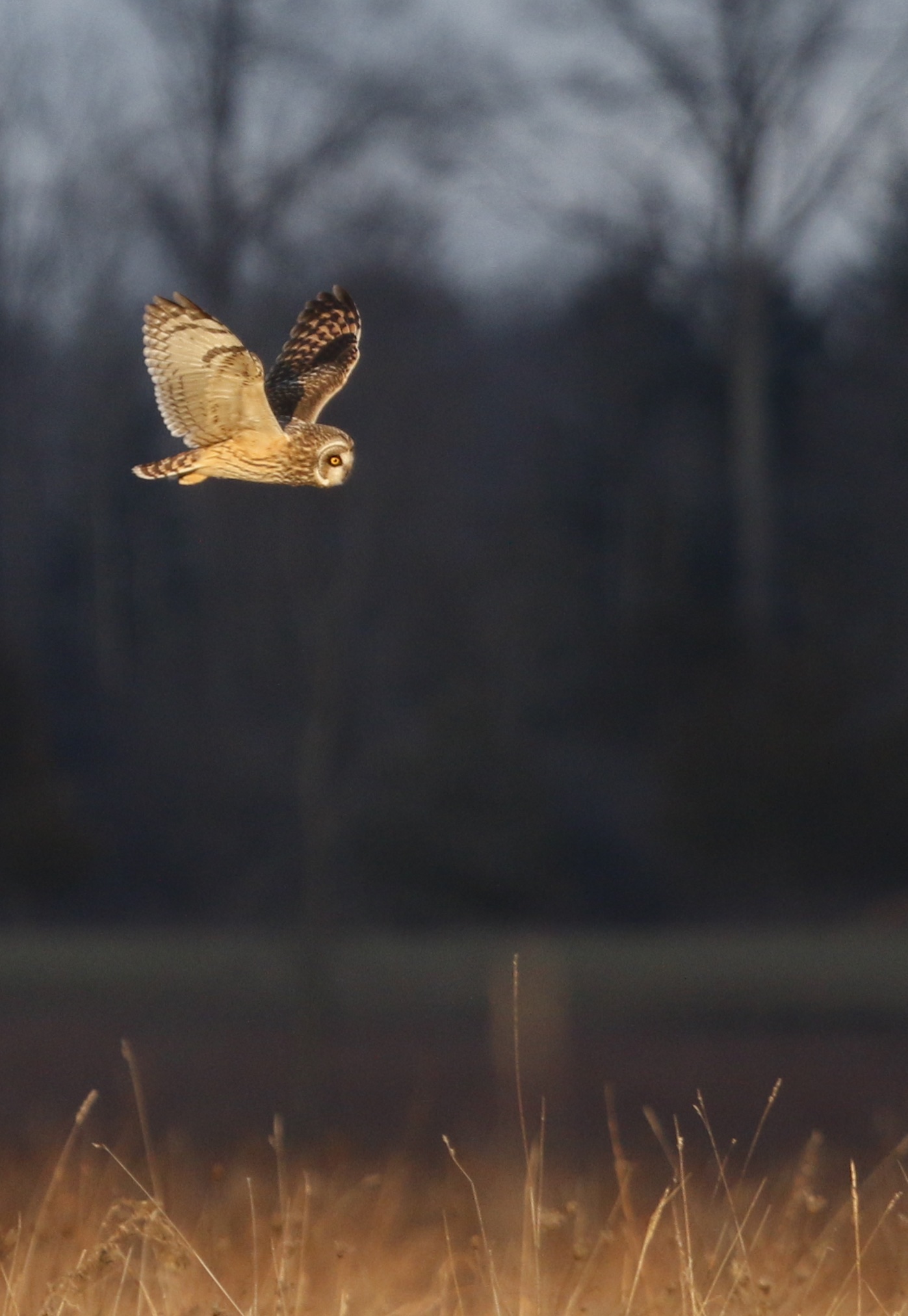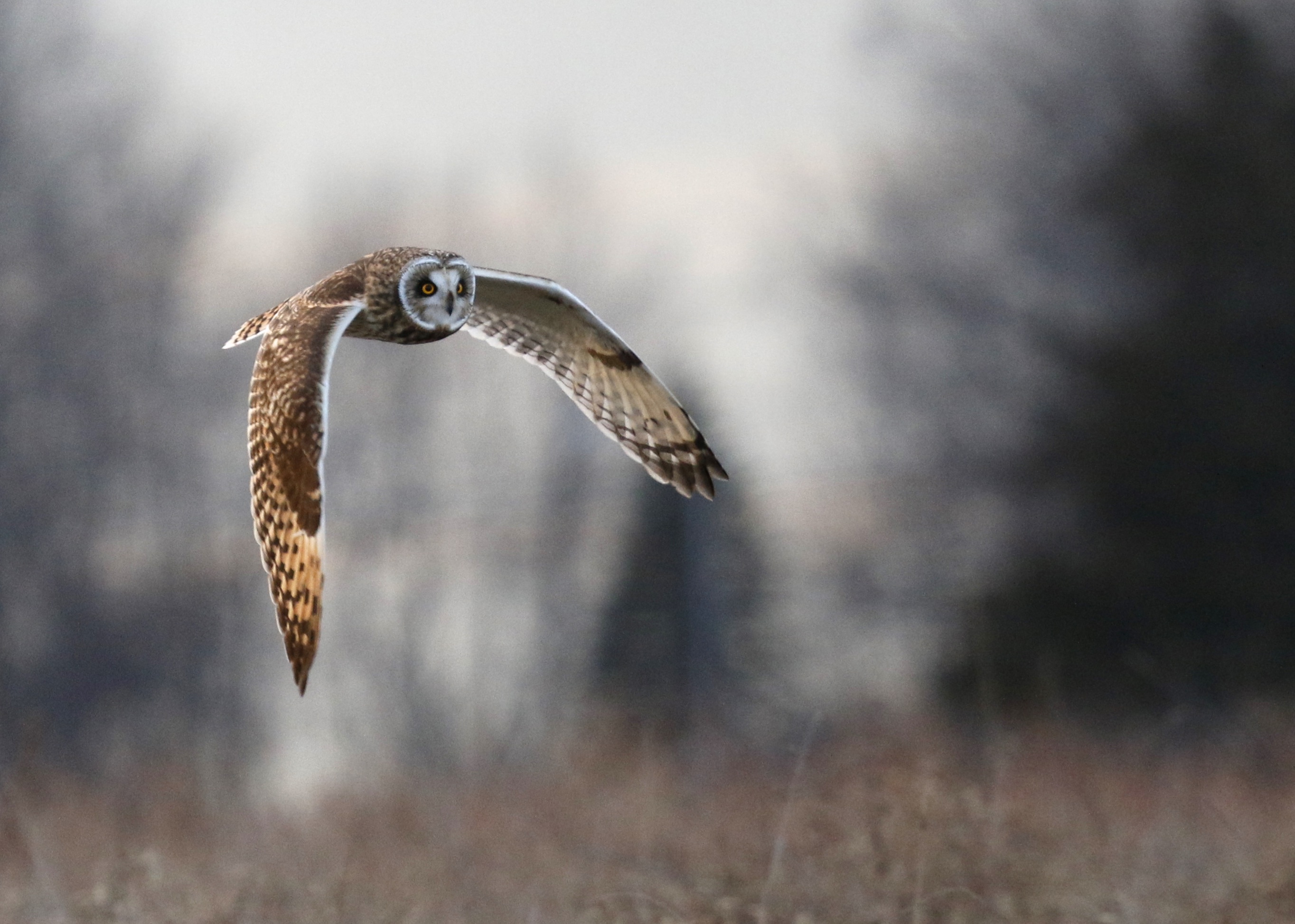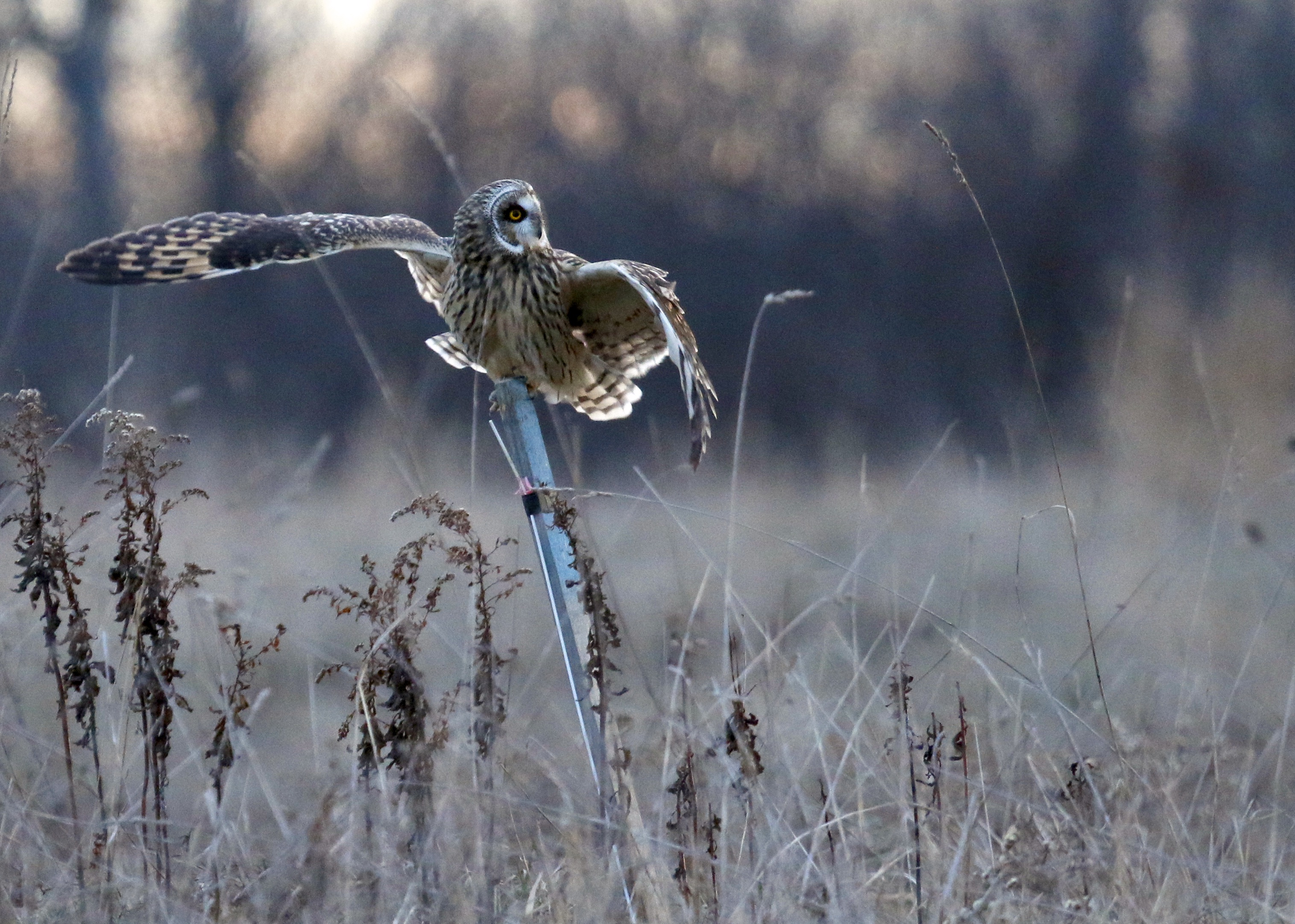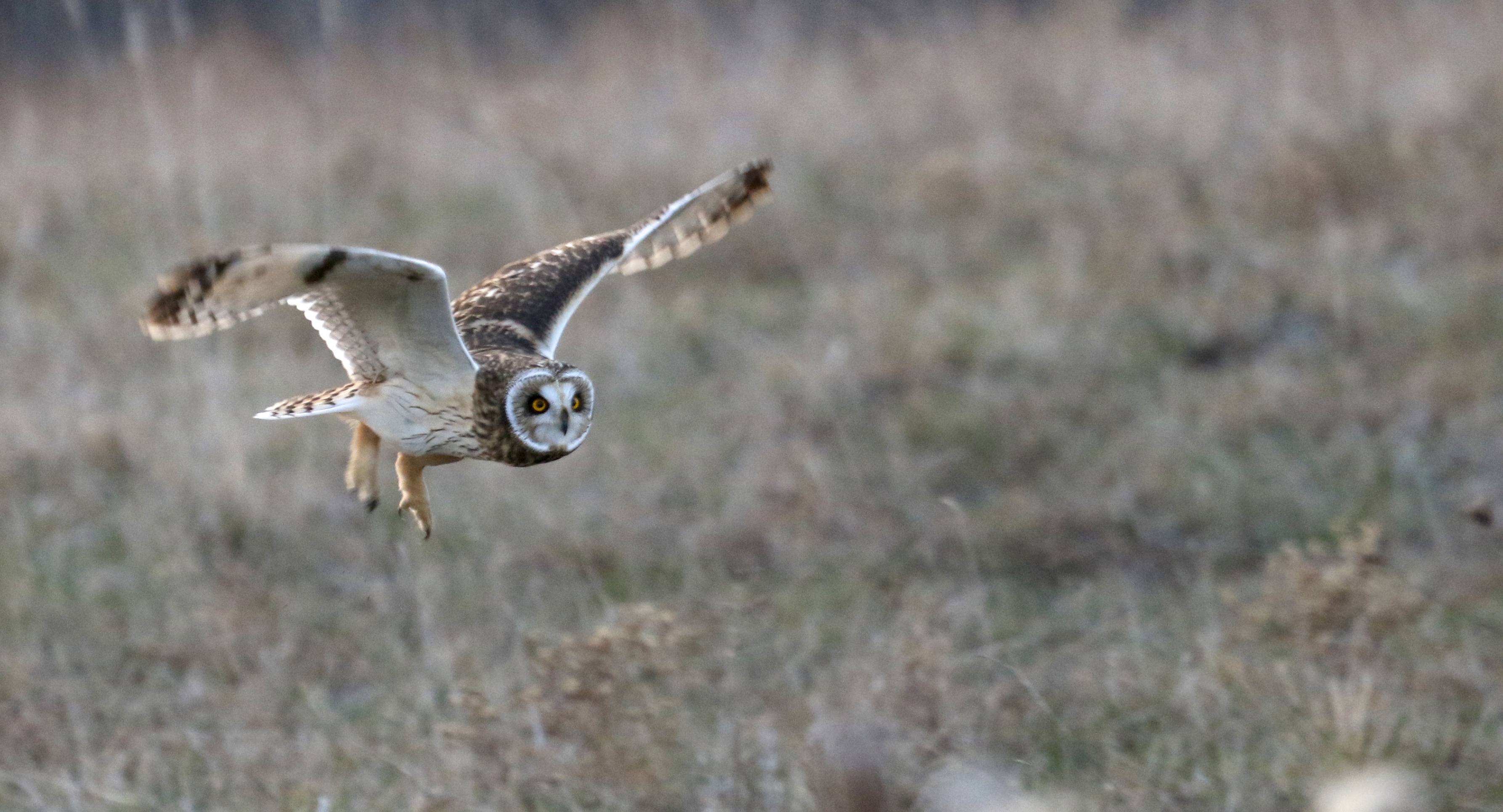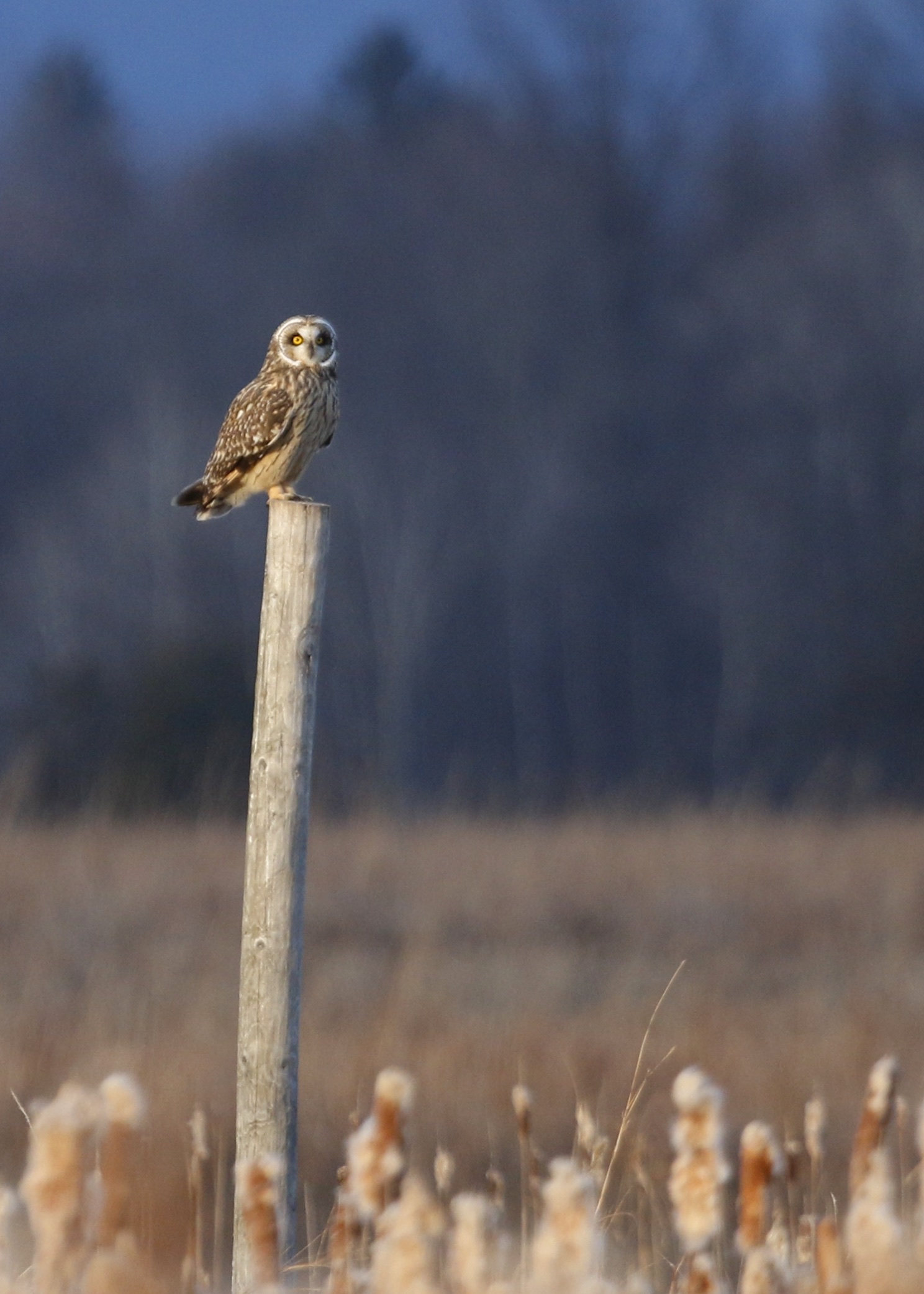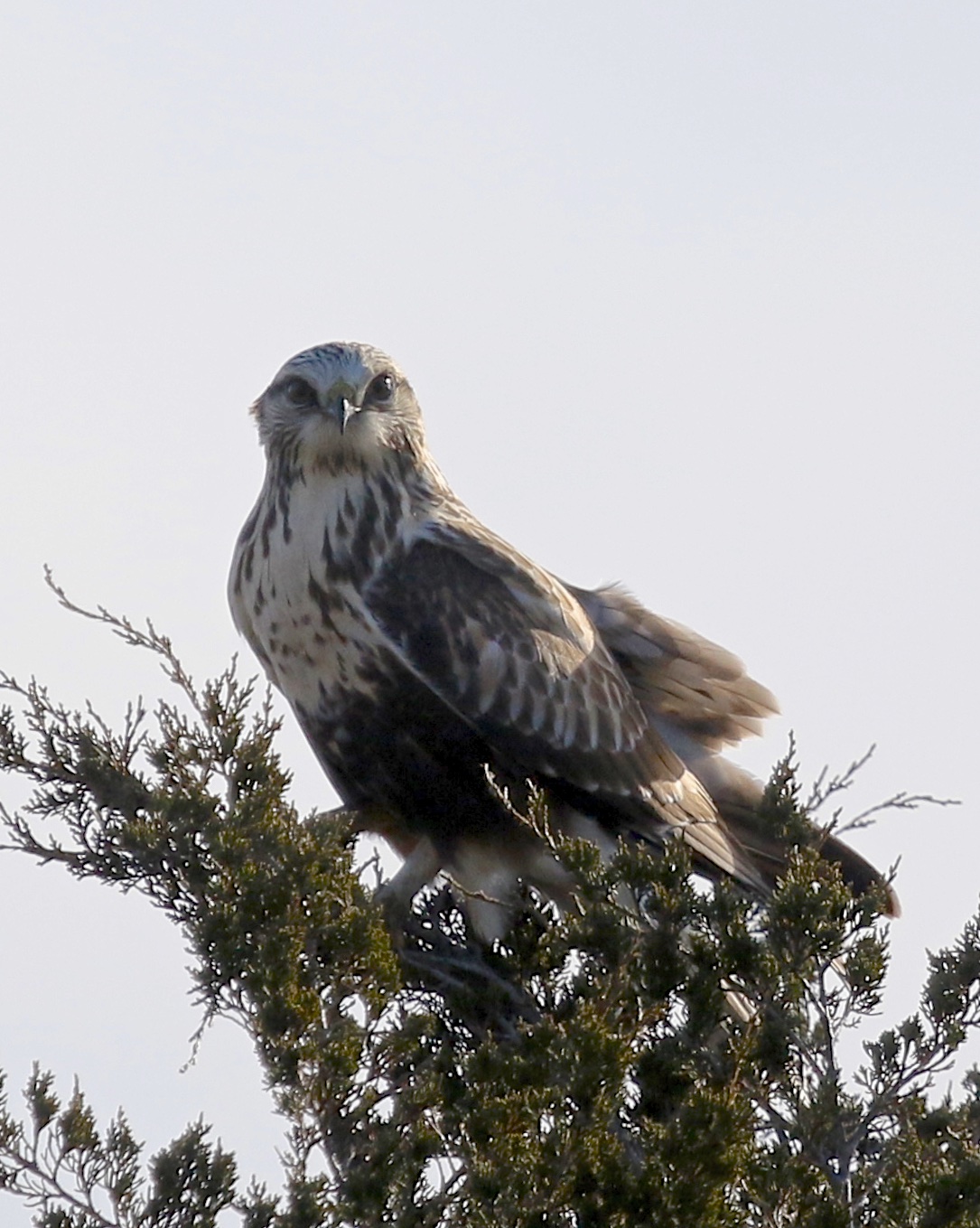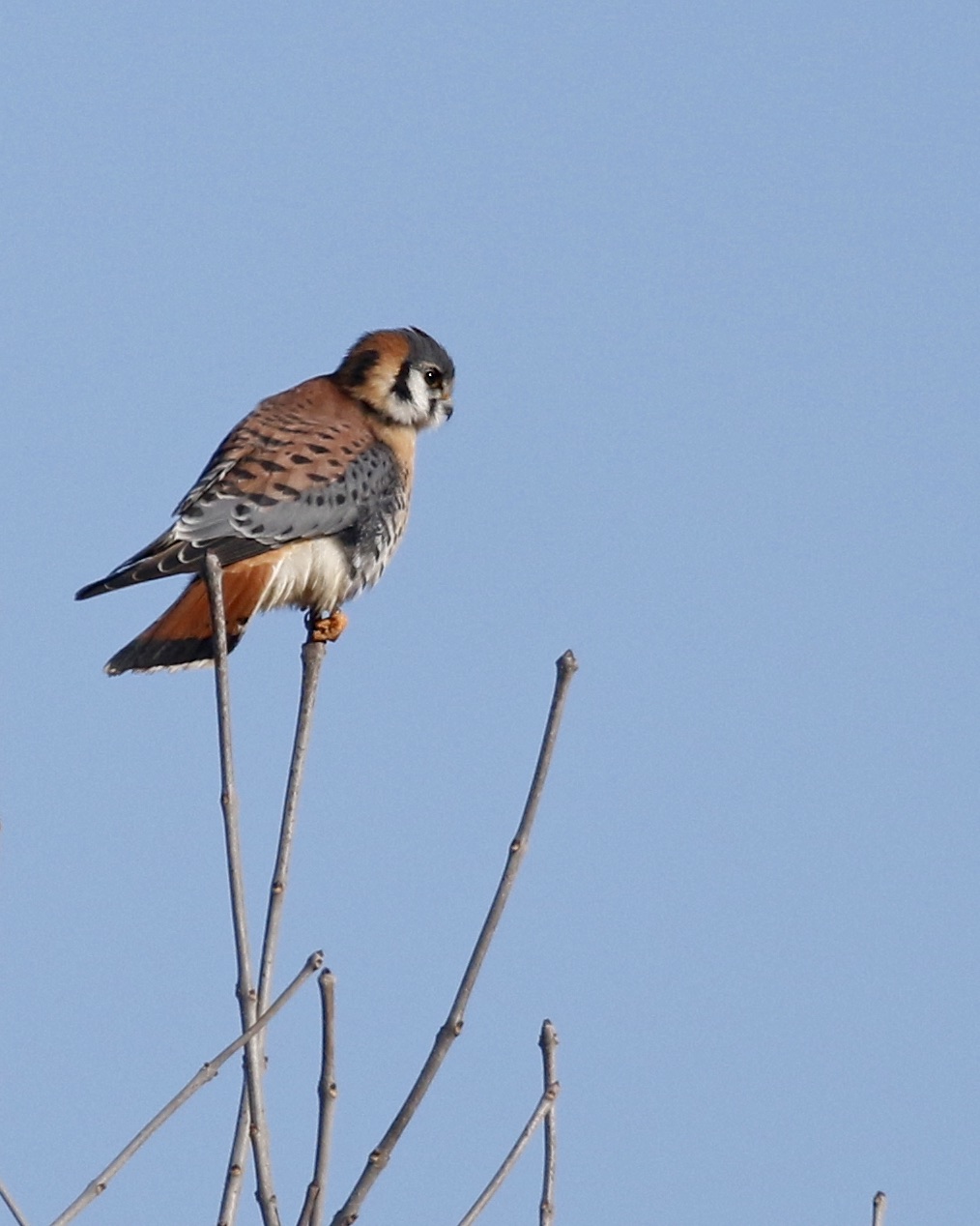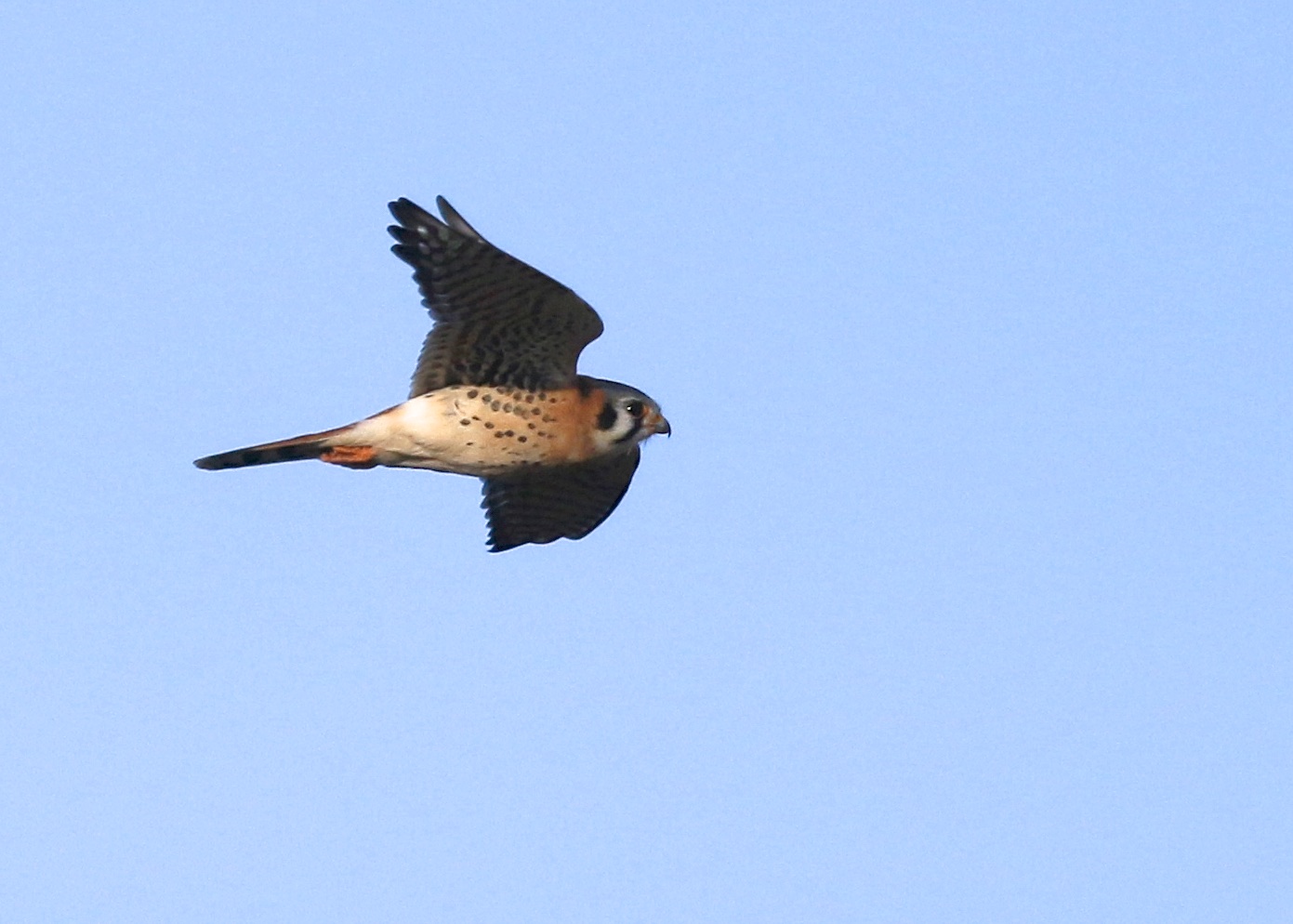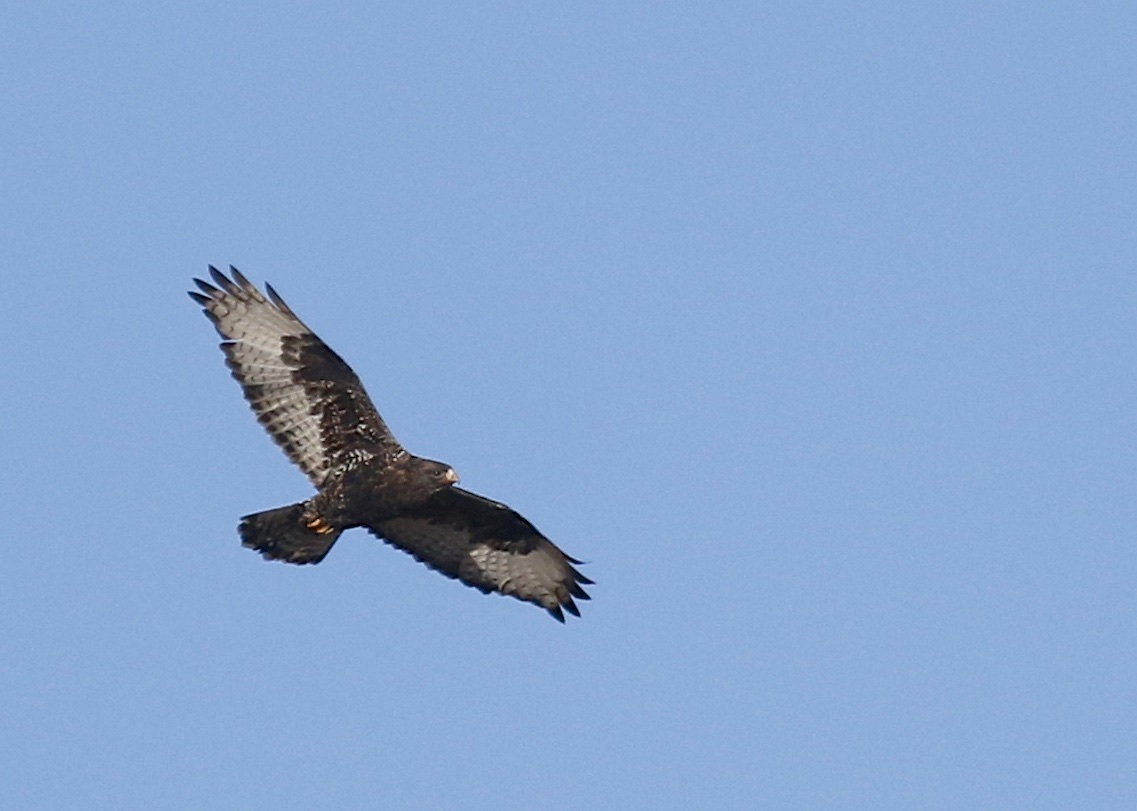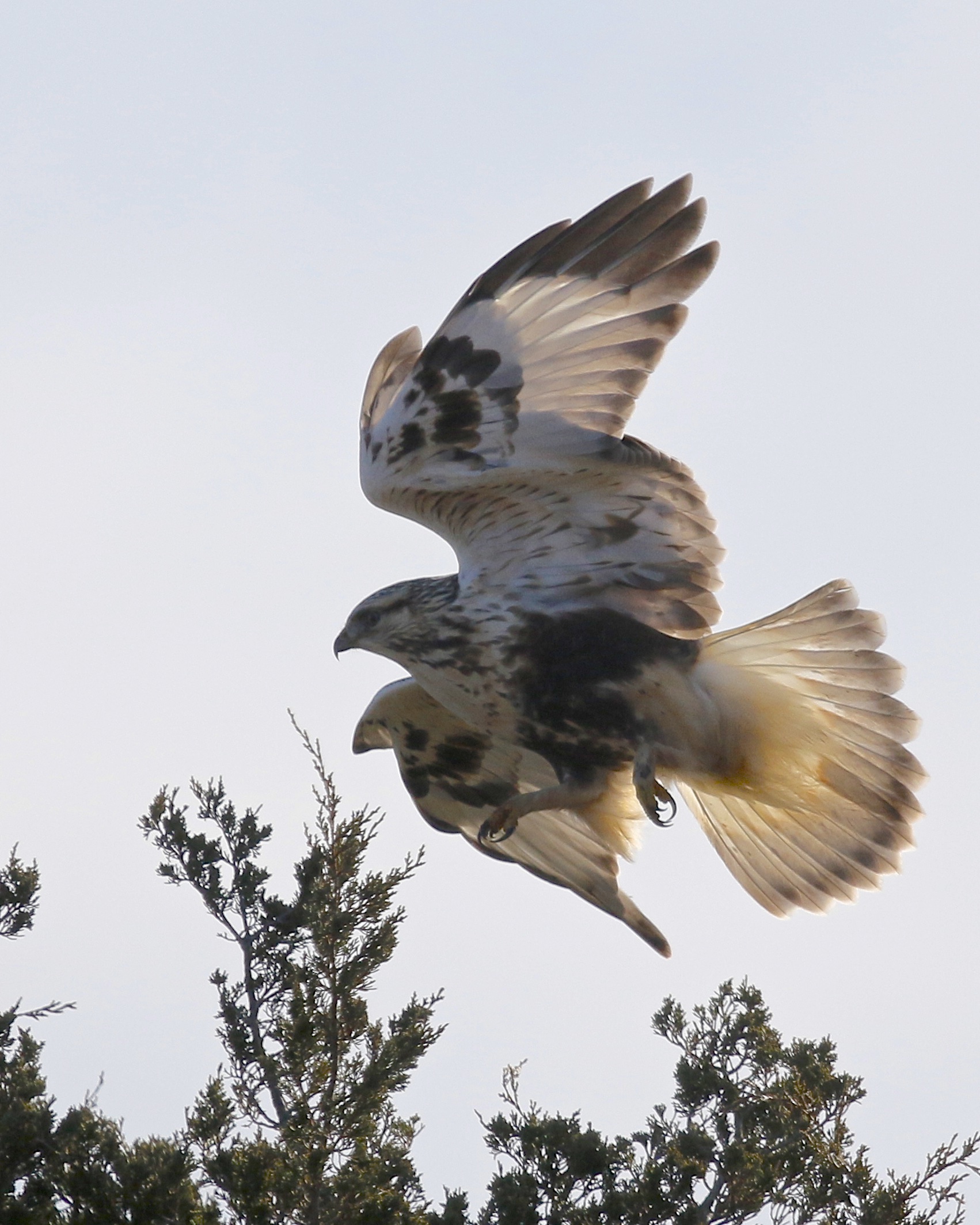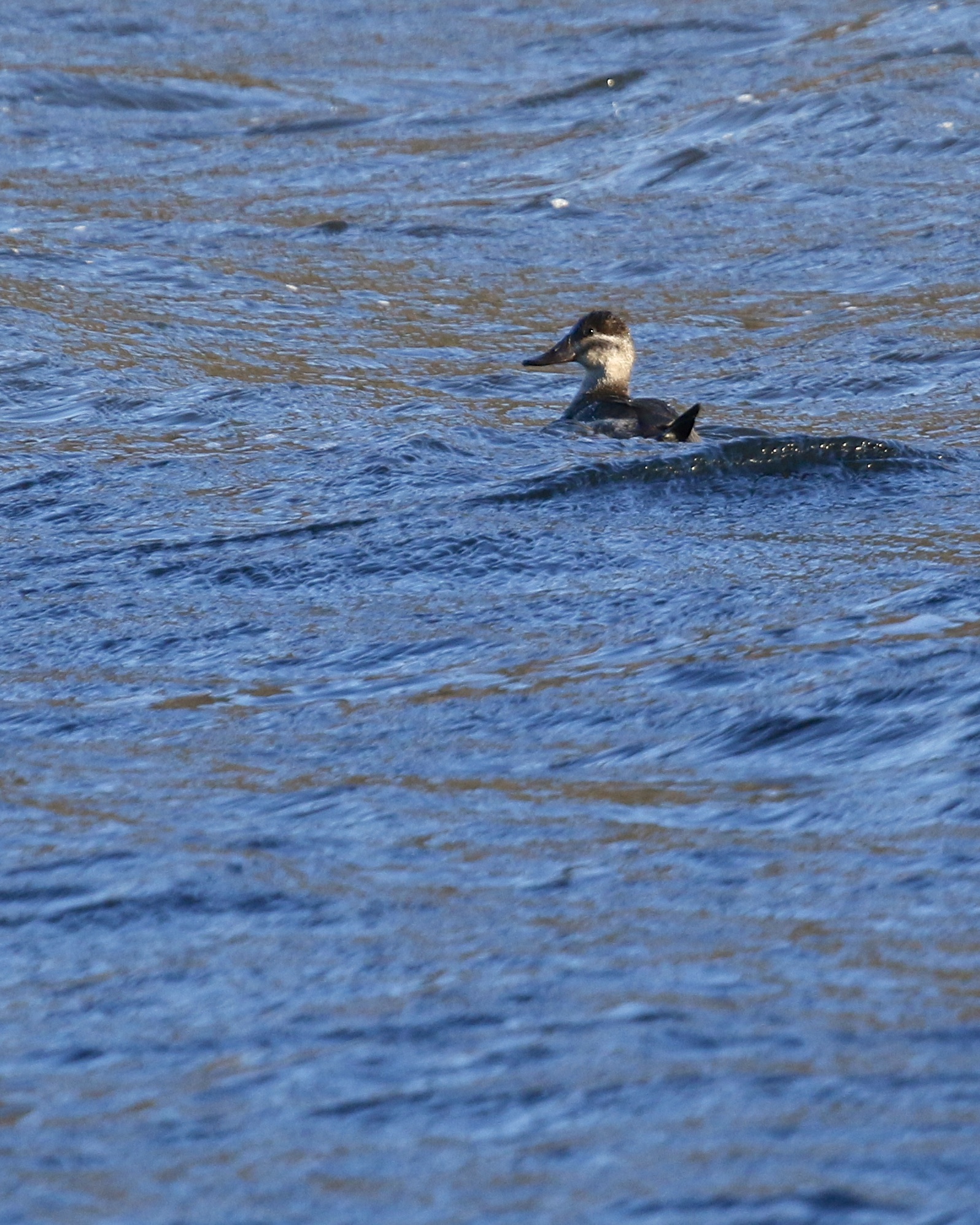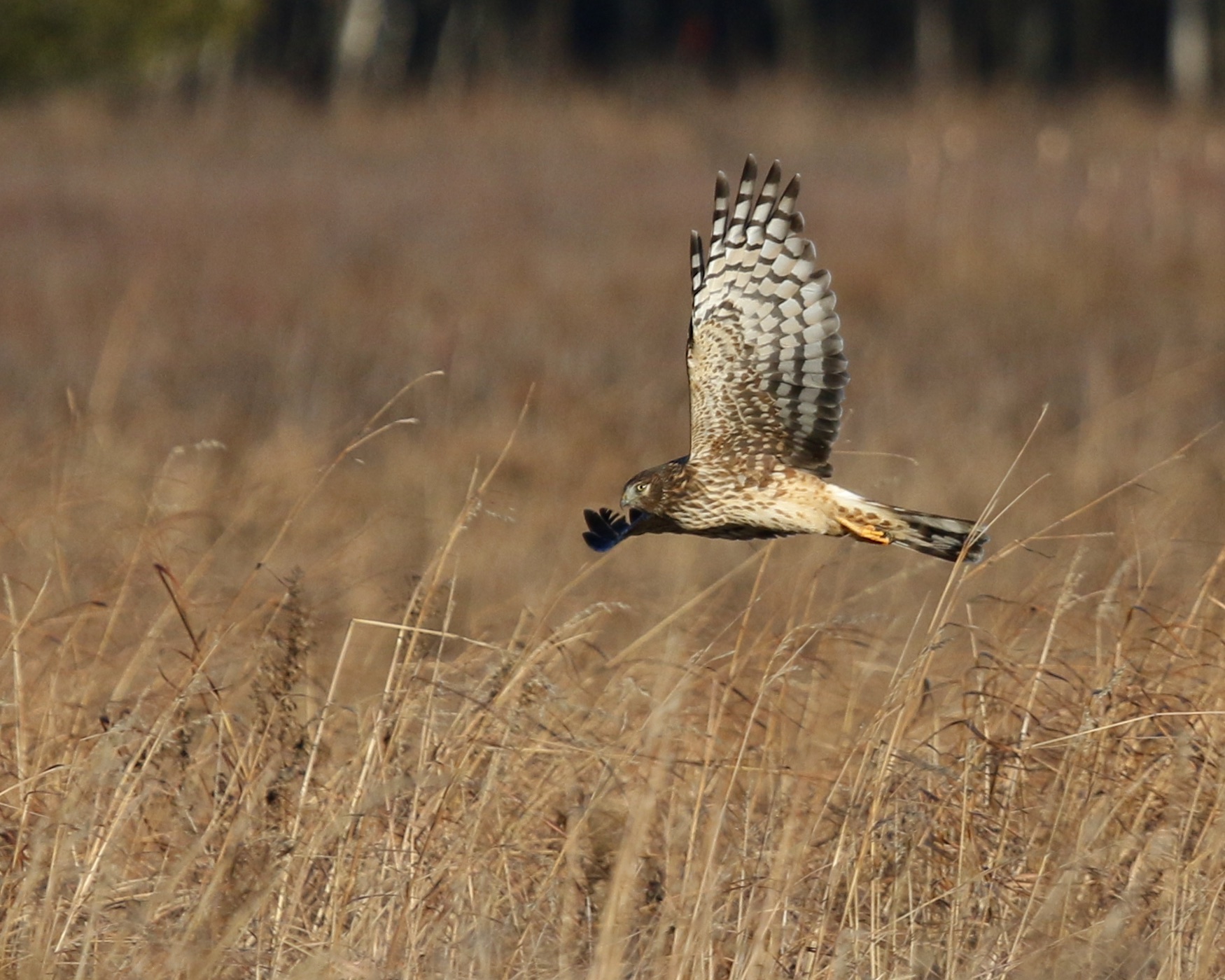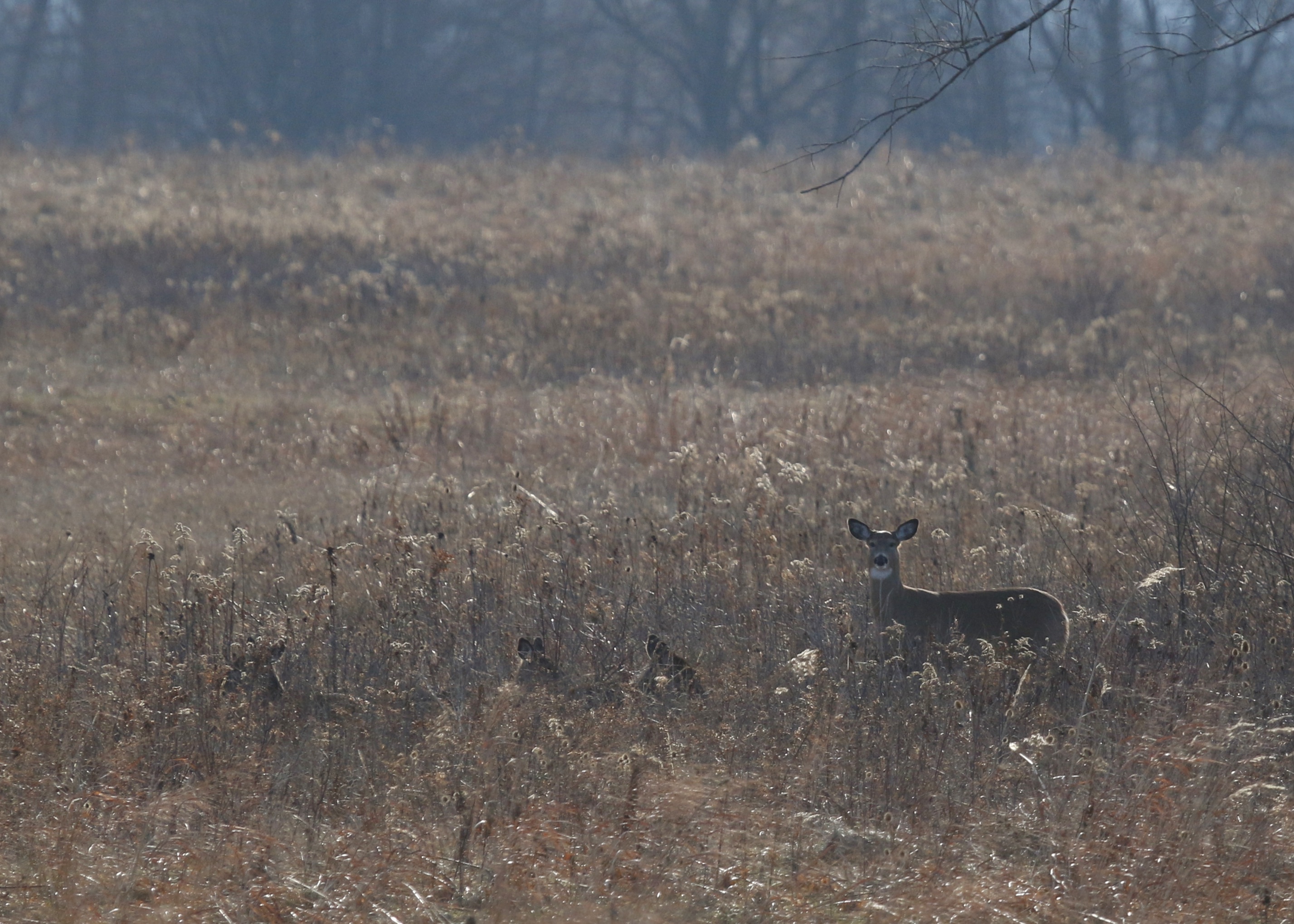
I got out a little late on this Saturday morning because I was waiting for the roads to clear from the fresh snow which had fallen overnight and continued to fall into the morning. I spent a little time in the New Hampton area of the black dirt. From Celery Avenue I could see many Canada Geese over the river in the fields that run along Onion Avenue. I stopped to scan them and from there I could see that there were approximately 20 SNOW GEESE among them. The Snow Geese were difficult to make out – there was plenty on the ground and it was still falling. I hustled around to Onion Avenue and spent some time scanning a large group of geese; I estimate over 1200 Canada Geese and maybe 100 Snow Geese. I did not find any other types of geese in with them. I birded my way up to Turtle Bay Road before turning back (I wanted to get to the Newburgh Waterfront for late afternoon to try for gulls again). Along the way I came across what is likely the same Merlin I have had before, as it was perched in the same spot on a wire along the road. I saw a couple of distant flocks of Horned Larks and then a small group landed briefly on the road. Among them was a single LAPLAND LONGSPUR, which was awesome to see.
I tried for gulls from the old Torches parking lot on the Newburgh Waterfront. There were many present, mostly riding the ice floes up the Hudson River. Herring Gulls seemed most numerous, followed by Ring-billed Gulls and then Great Black-backed Gulls (which I had nearly 30 of). I had one distant first winter Iceland Gull, but no sign of the bird I had yesterday and believed was a Lesser Black-backed Gull. I guess a better, confirmed look at that bird will have to wait until another day. When I have seen a bird that I am not very sure of, I really like to have a photo, because as time passes, doubts start to creep into my mind. I had a couple of raptor highlights while I was there as well. Out on the ice I had 8 Bald Eagles. In the parking lot, a woman stopped her car to tell me there was a hawk perched on a post. It ended up being a Cooper’s Hawk that posed nicely for me. For a day where I wasn’t sure if I would even get out, it was a really good day.
